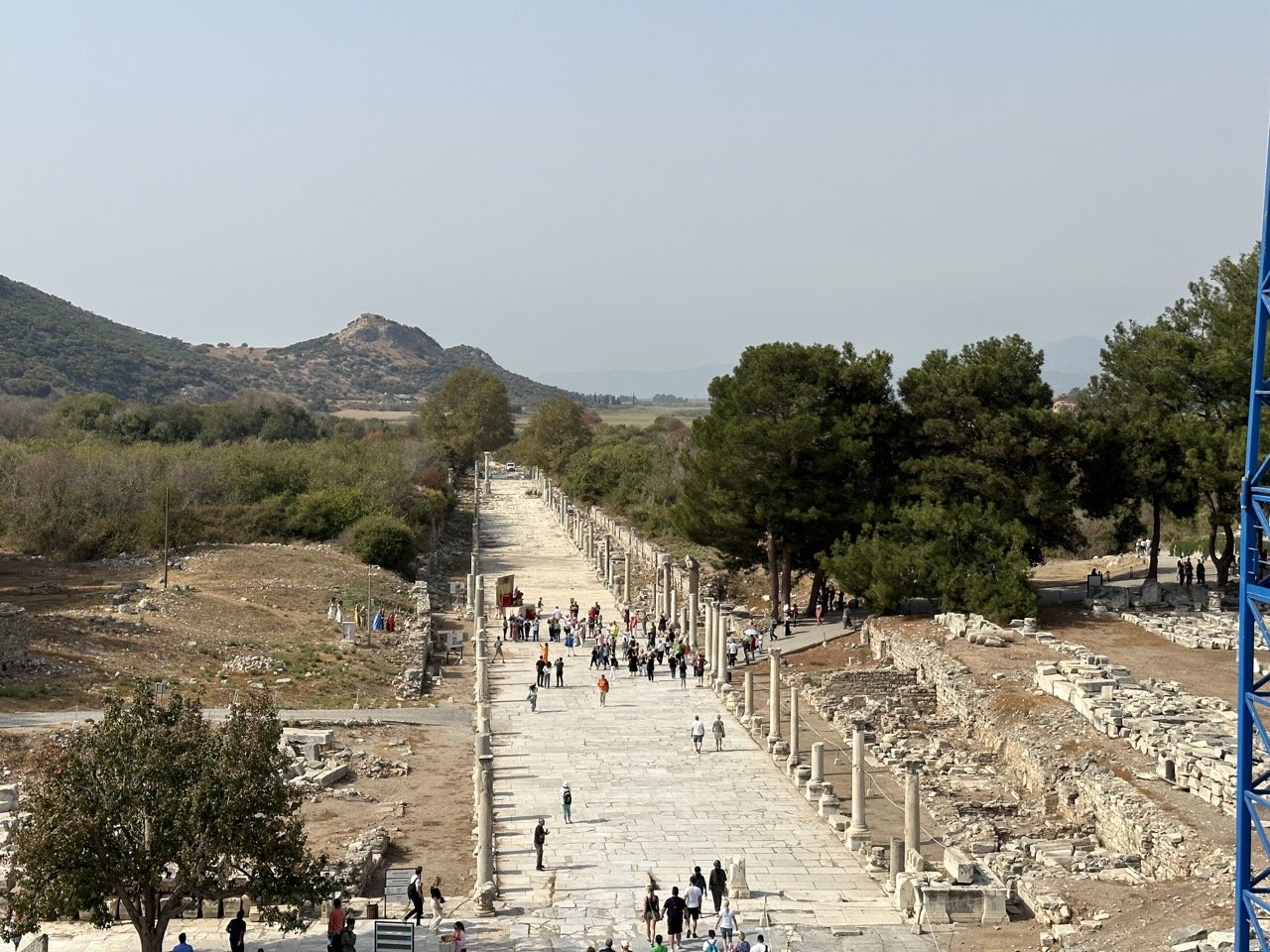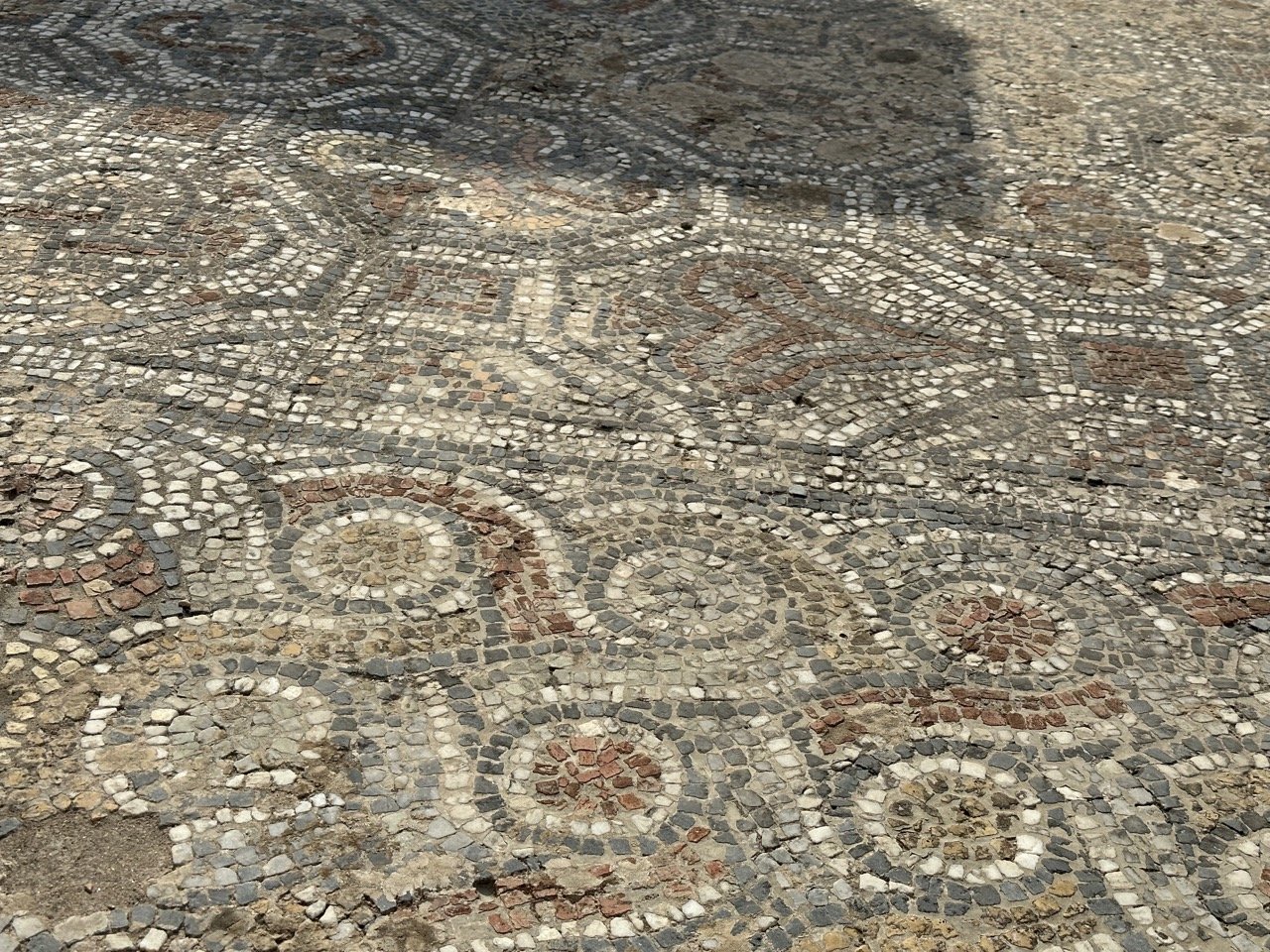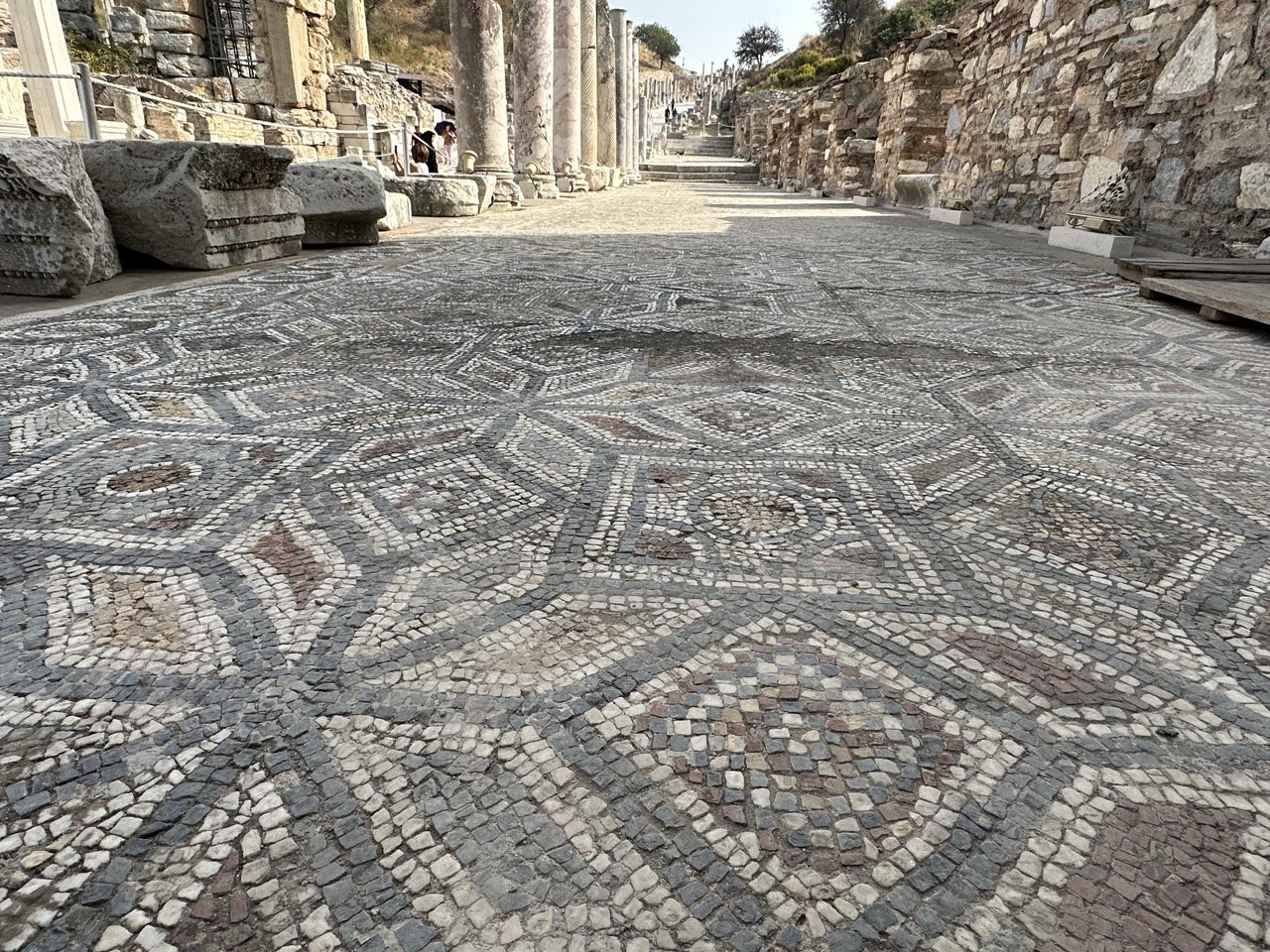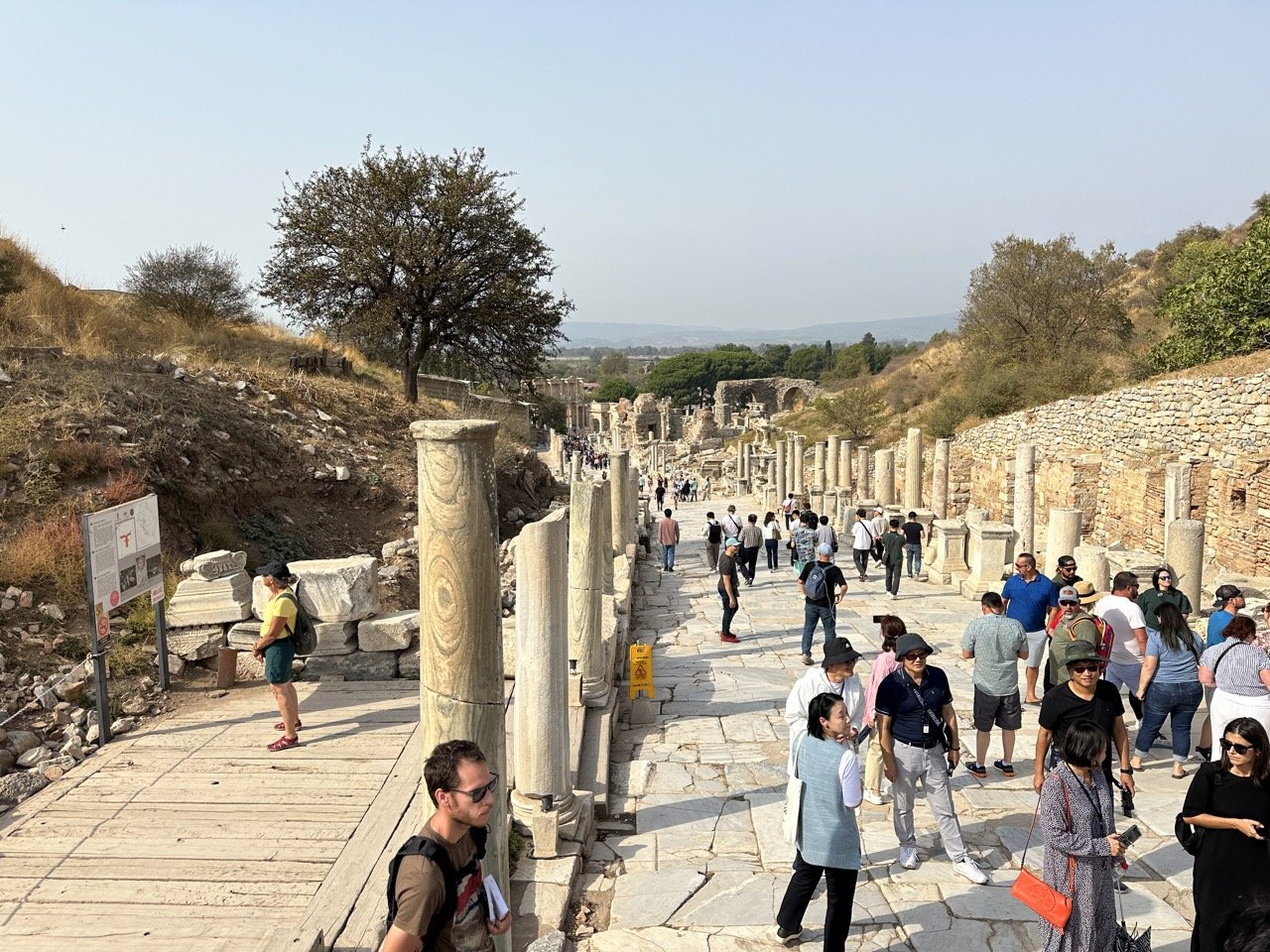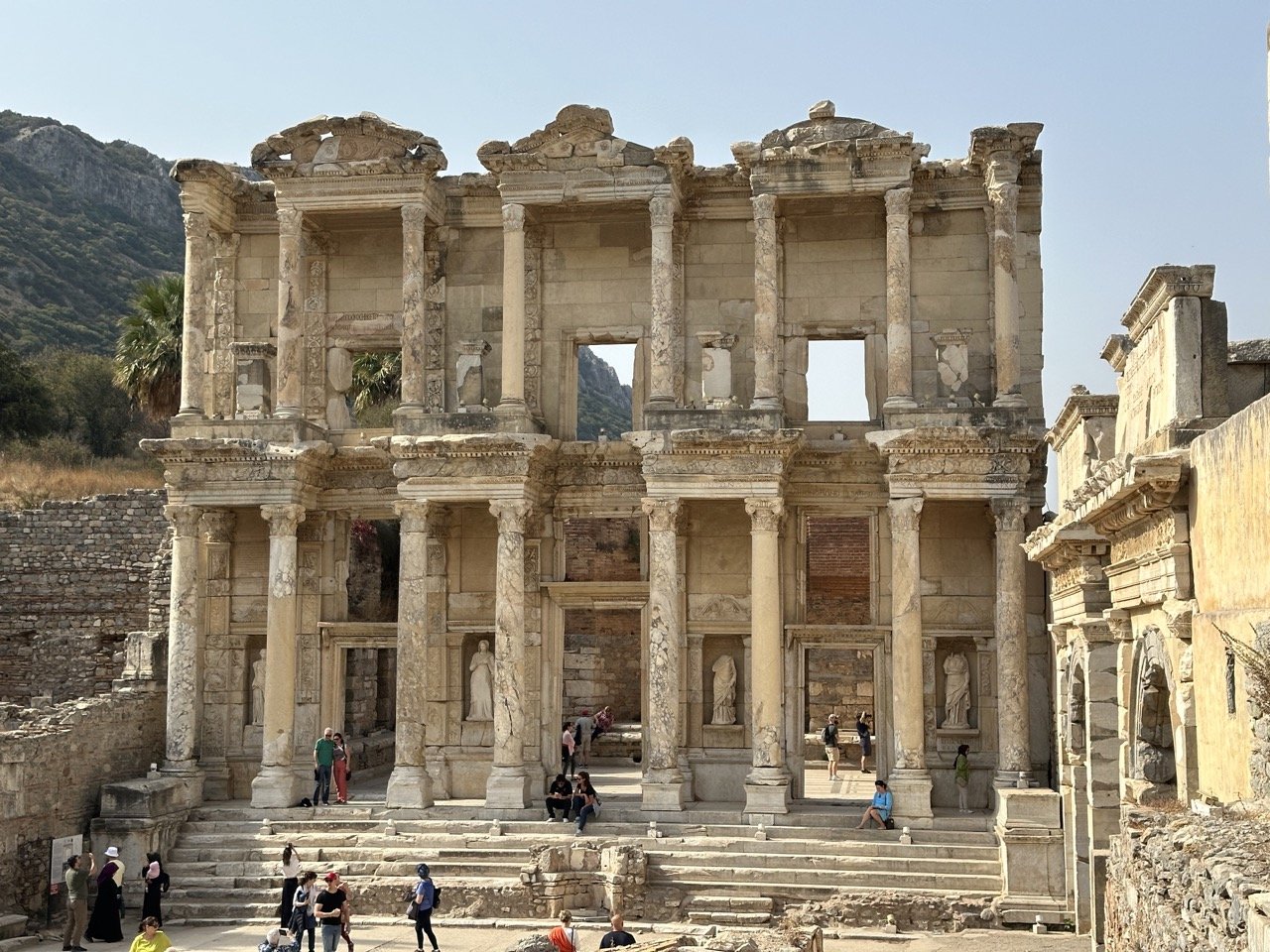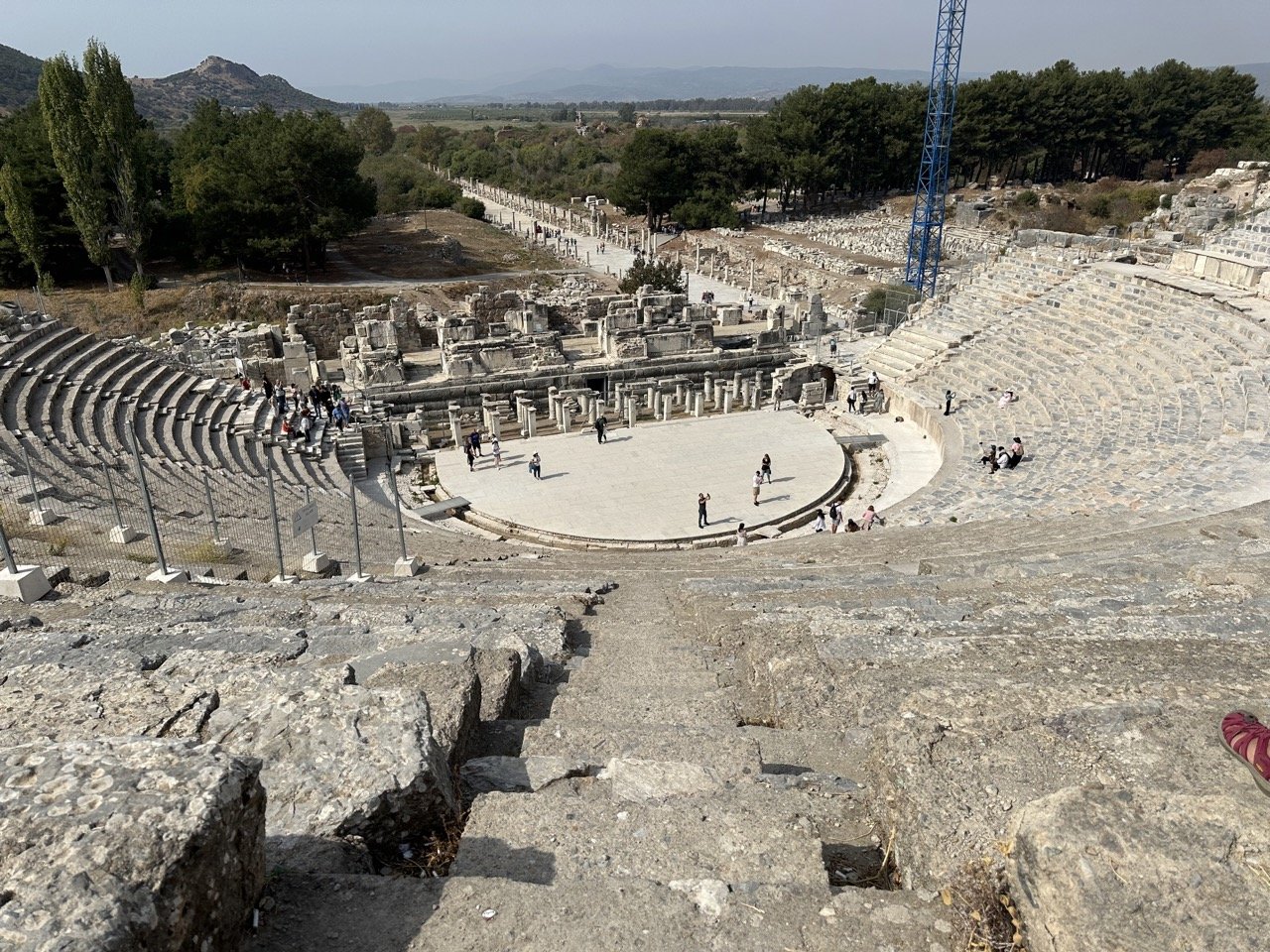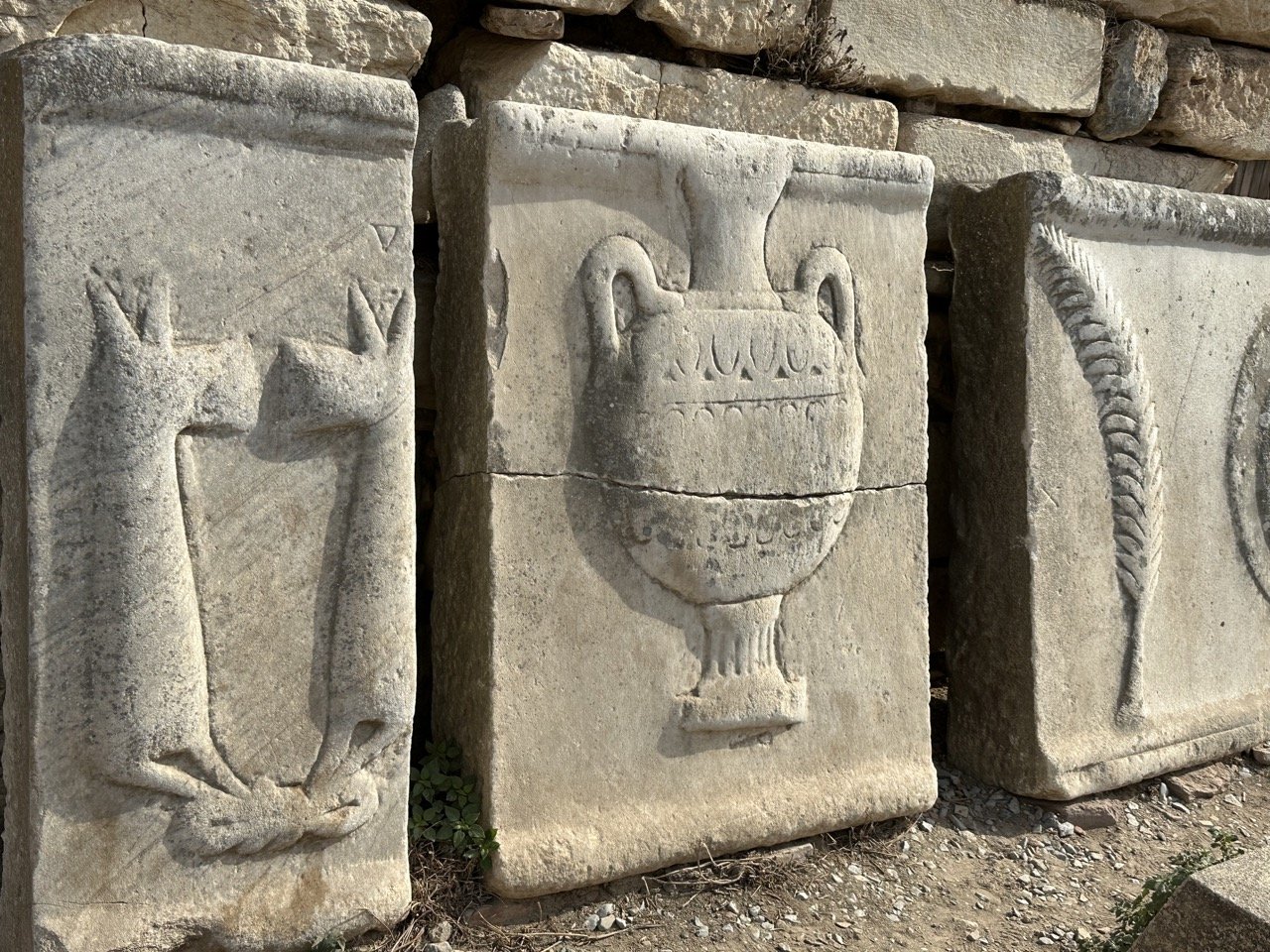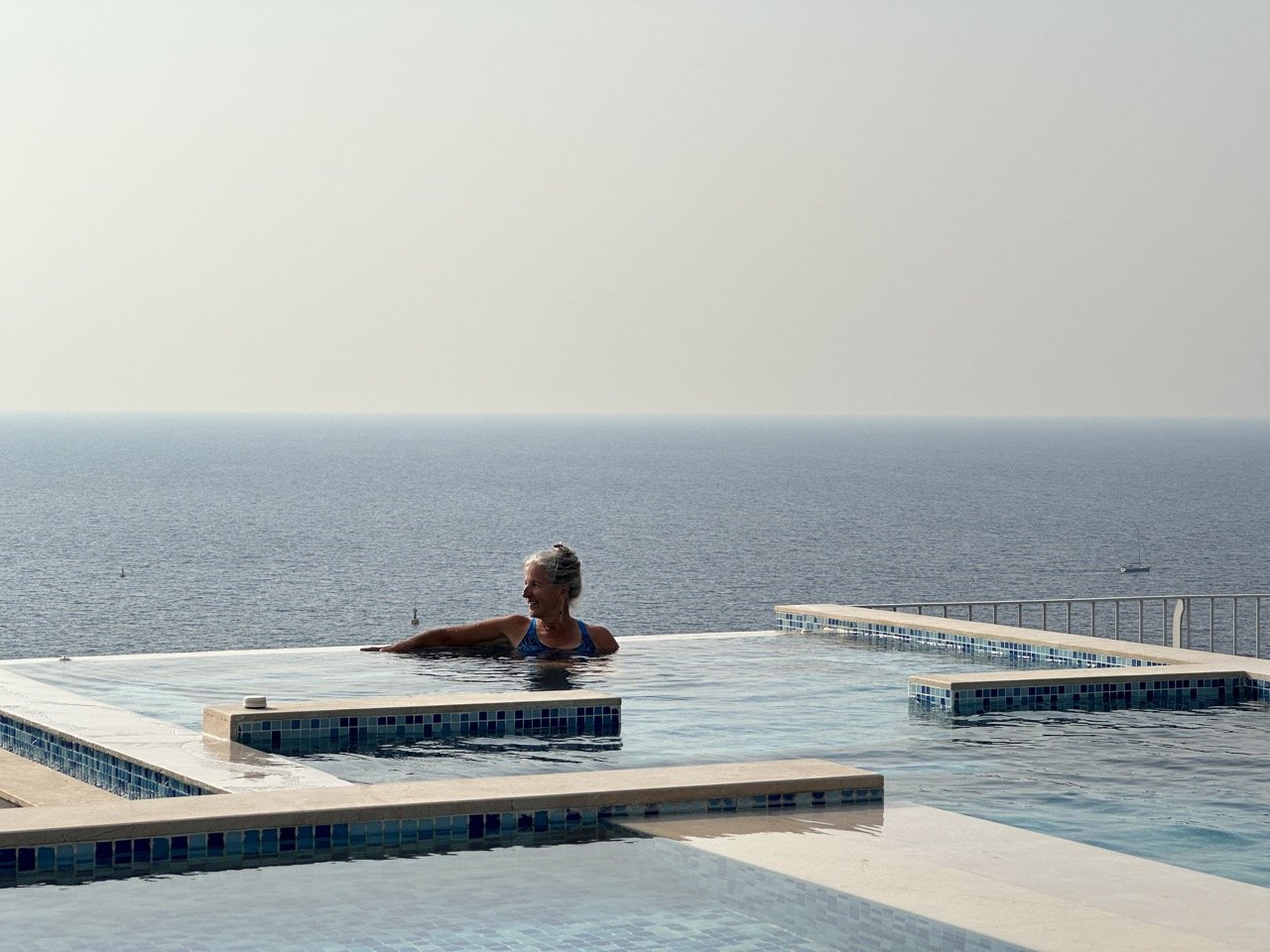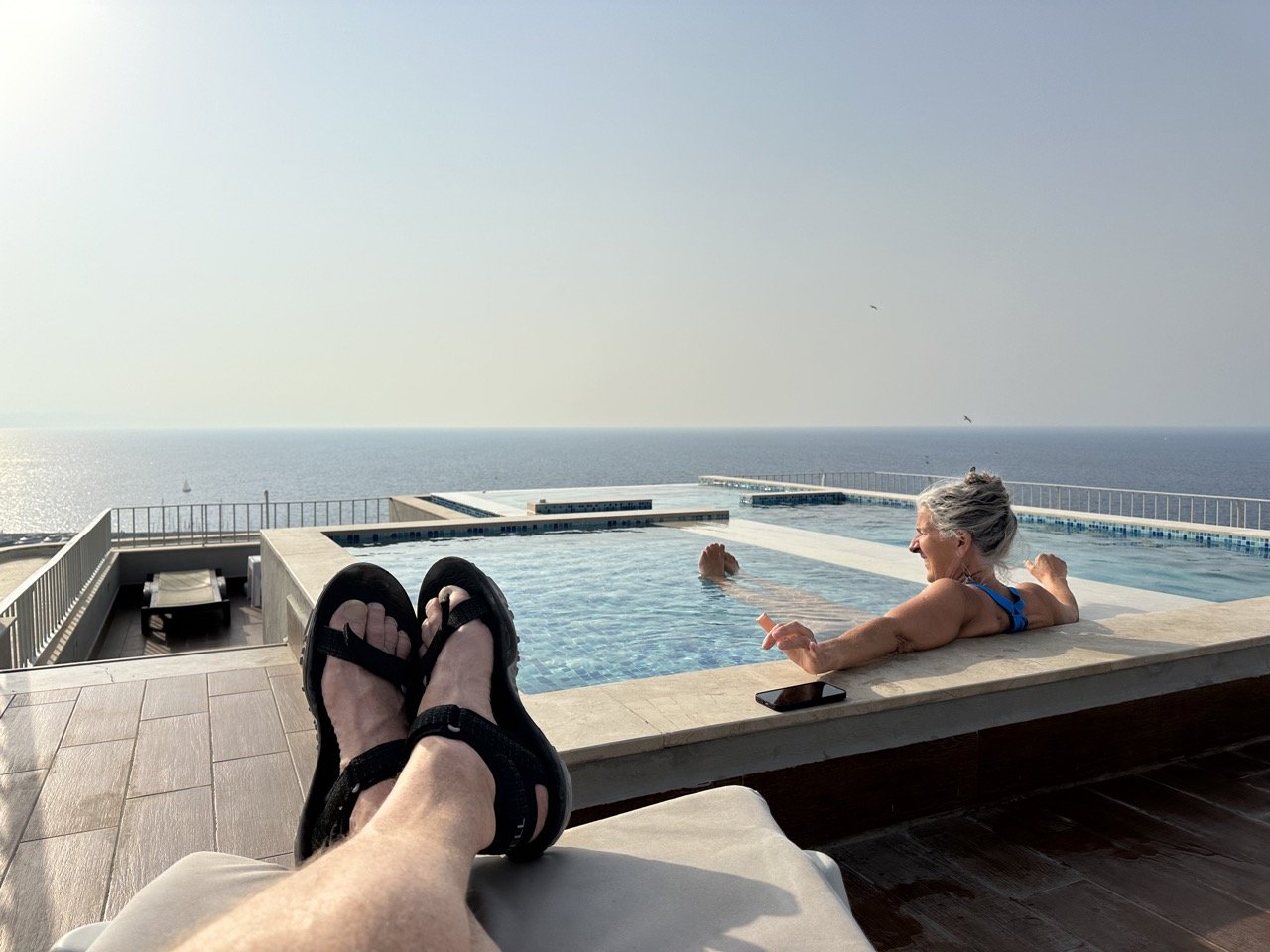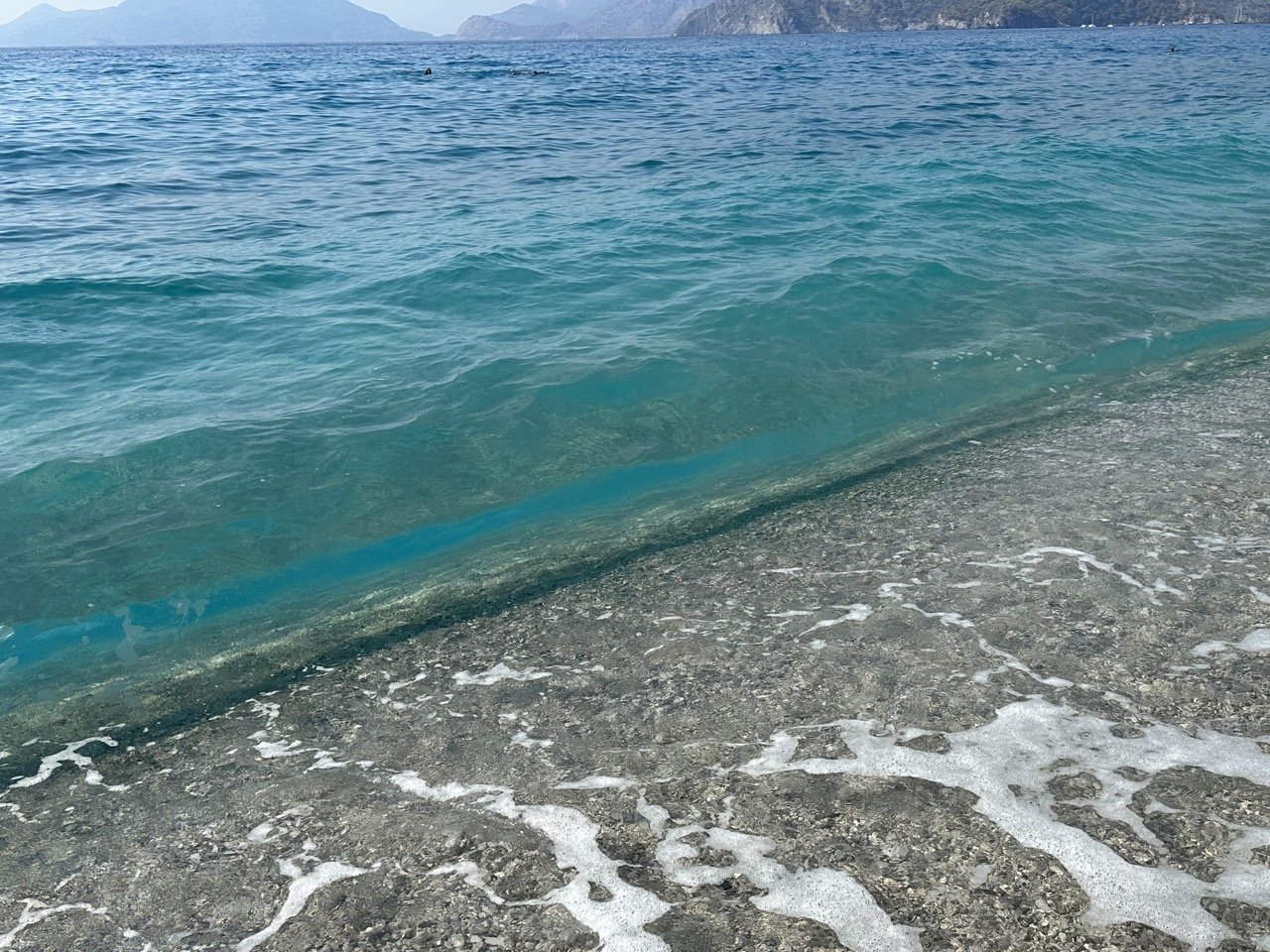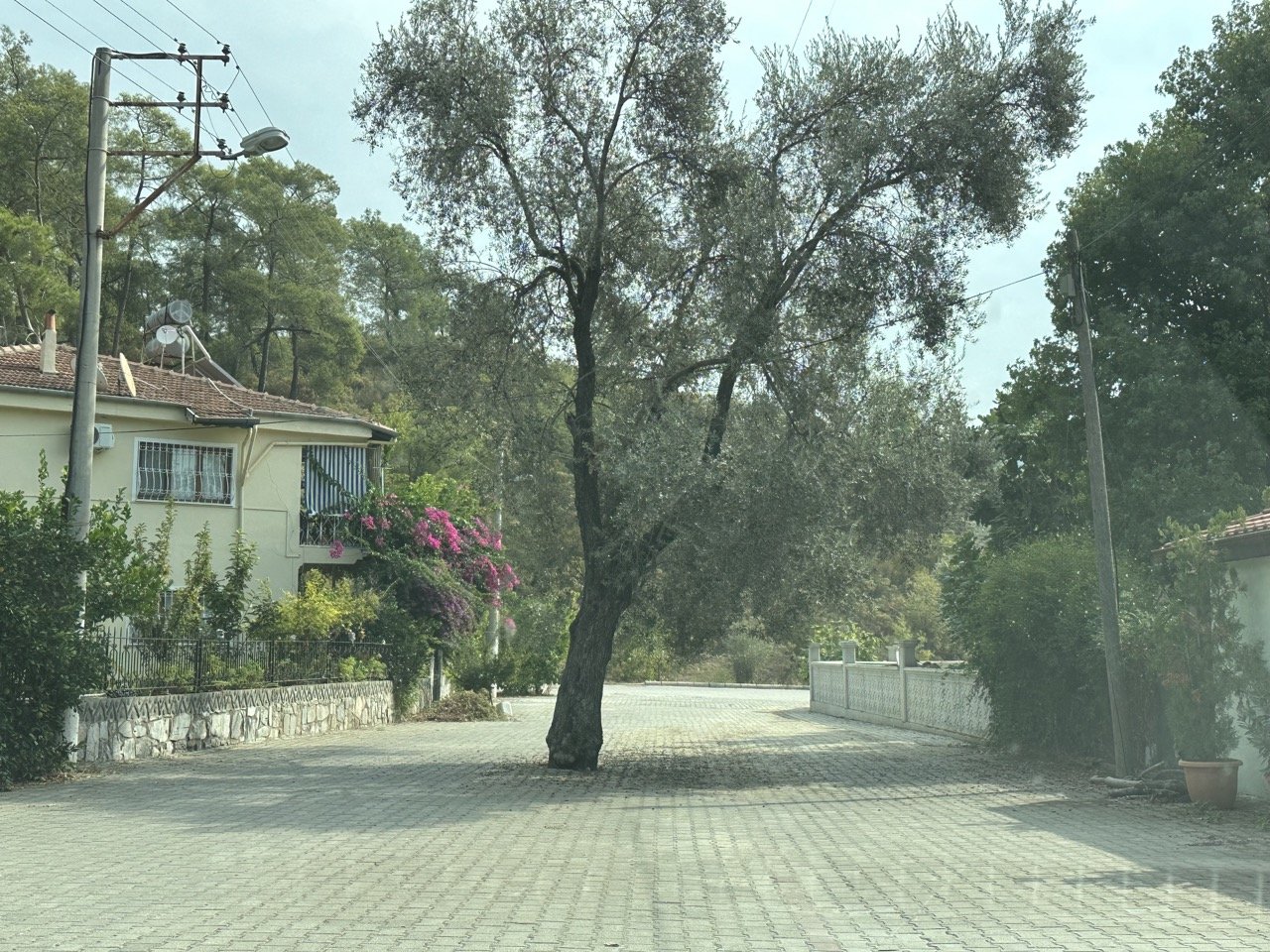Leaving The Turquoise Coast
This beautiful coastline we’ve been exploring, also referred to as the Turquoise Coast (for obvious reasons) is known for its hundreds of beaches and Ancient wonders, and was home to scholars, saints, warriors, kings, heroes, and mythical figures. The diverse landscapes, the rich culture and the hidden gems (if you take the time to wander) make the Turkish Riviera a total blast to explore!
We left Kalkan about noon on another brilliantly sunny and warm day. Our plan was to find a beach to spend the afternoon before heading to Göcek. Naturally I always look at the map and pick the most out-of-way, off-the-beaten path place we can easily get to (that makes total sense, right?). Google maps has done fairly well by us so far, at least getting us from place to place, though it often directs us on secondary or even more remote back roads.
It was a wild ride!
This time we ended up on a twisting, single lane, occasionally dirt, road that zigzagged up the mountainside many kilometers from anywhere. We rounded one hairpin turn and suddenly, in the middle of nowhere, we came upon an elderly woman, head wrapped in an orange floral scarf wearing a long striped purple skirt and green flowered blouse, standing behind a small tv tray on which she had a hotplate with a large pot of steaming corn on the cob?!?! She waved an ear of corn at us shouting something we didn’t understand. We were so startled by her sudden appearance and so focused on the twisting road that we gaped at her, somewhat frozen, unable to stop. Another couple of kilometers down the road it happened again. I wish I’d captured a photo but there was no time. Where these women came from (they must have crawled up the mountainside) and why they chose where they did to sell their corn is a total conundrum.
We dropped out of the mountains to the shore and arrived at Kidrak Beach, a small, quiet, pebbly crescent surrounded by a mixed pine forest just on the outskirts of a much larger beach town. It was time for a lazy beach walk, chilling with our books, and a long swim.
While lounging we noticed the sky was peppered with hundreds of colorful paragliders. We learned that the neighboring town, Ölüdeniz, ranks globally as one of the top paragliding spots in the world. This is due to the incredible scenery, great weather conditions for flying, and safety standards among the local companies and pilots.
You depart from Babadağ which means Father Mountain, at approximately 1960 meters (~6400 ft). Your descent to the landing point along Ölüdeniz Beach takes around 40 minutes. A tandem flight with an experienced pilot is definitely on my bucket list! The Lycian Way also passes through these mountains and I imagine the trail here is truly spectacular.
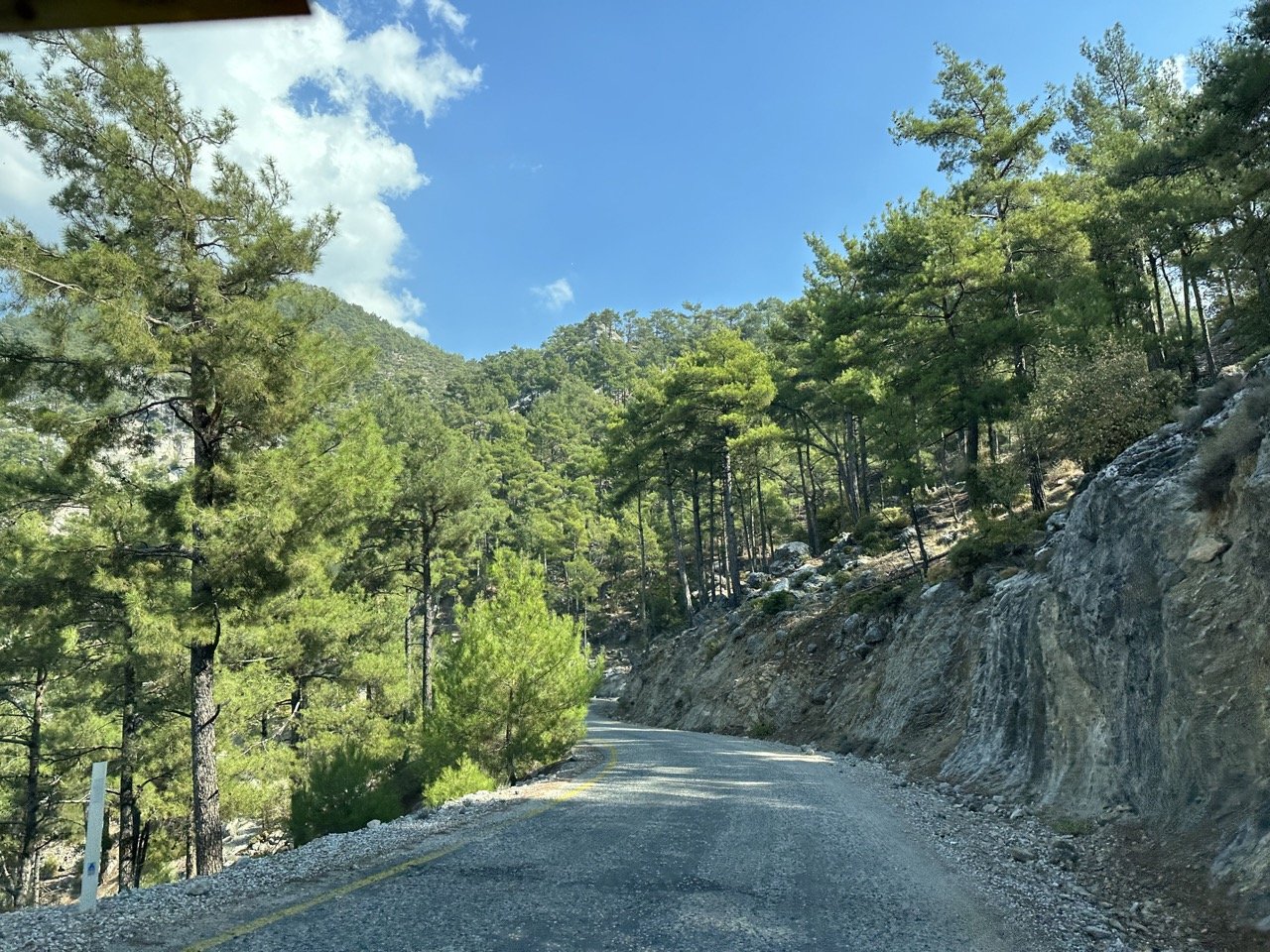
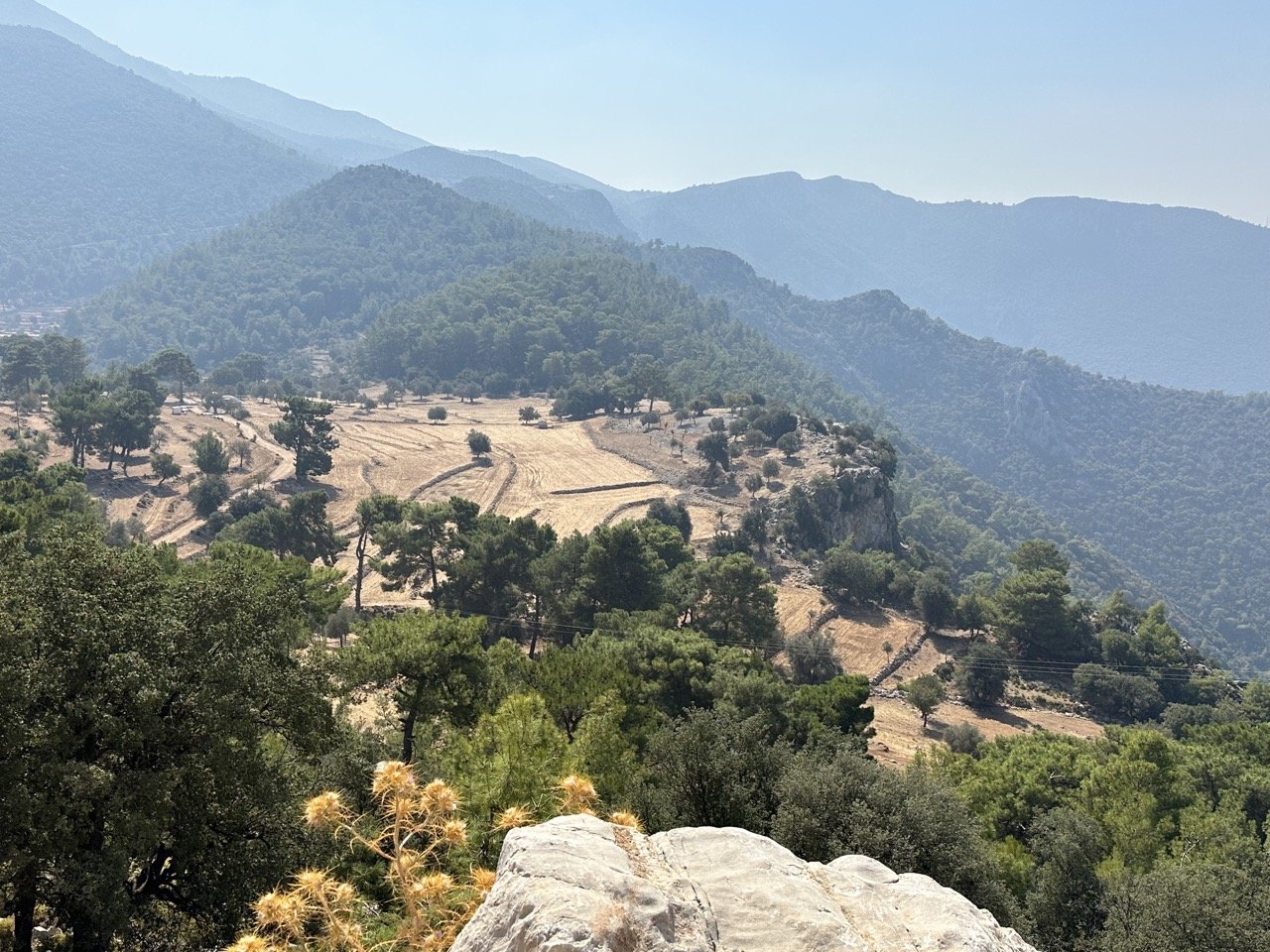
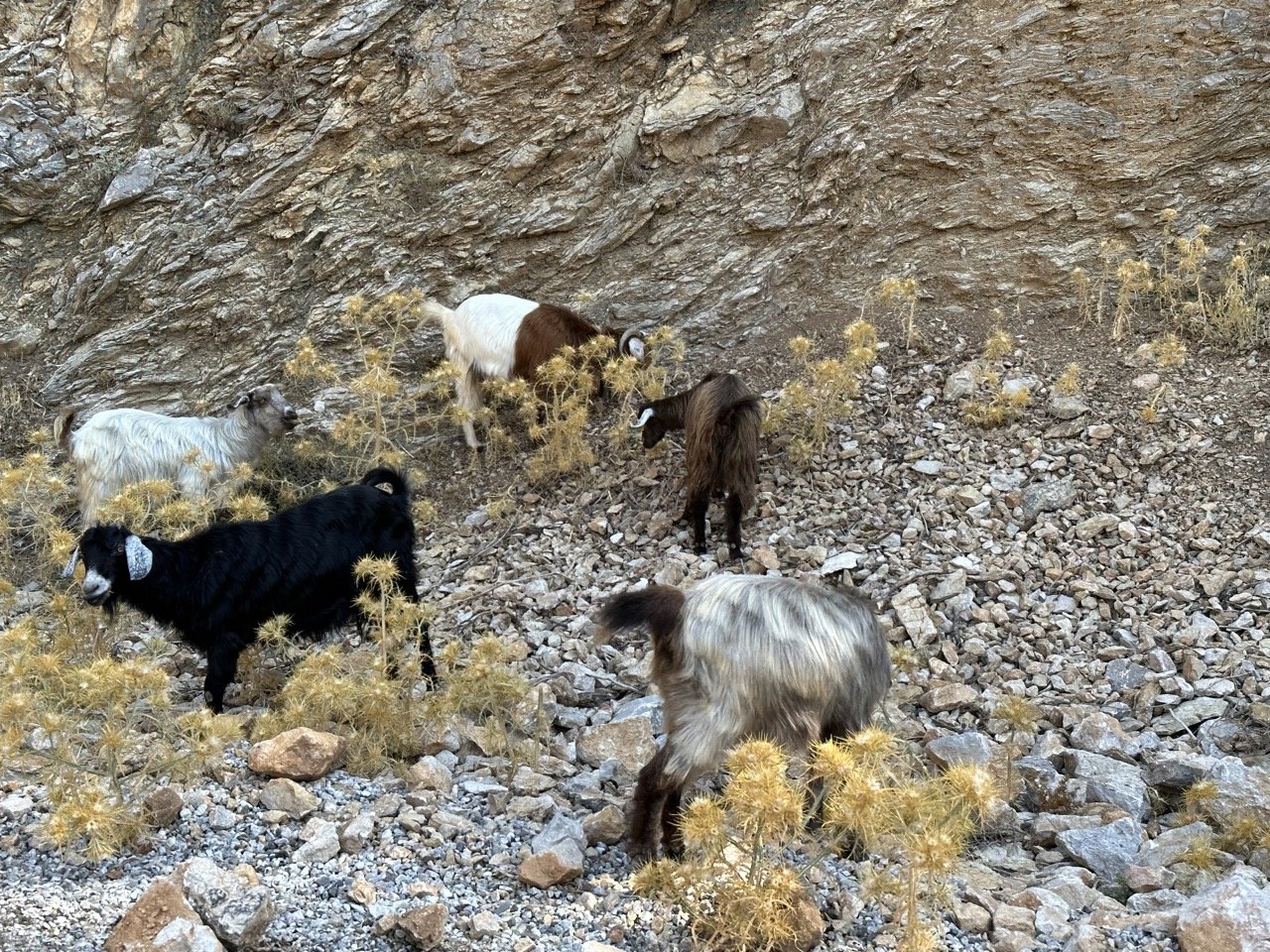
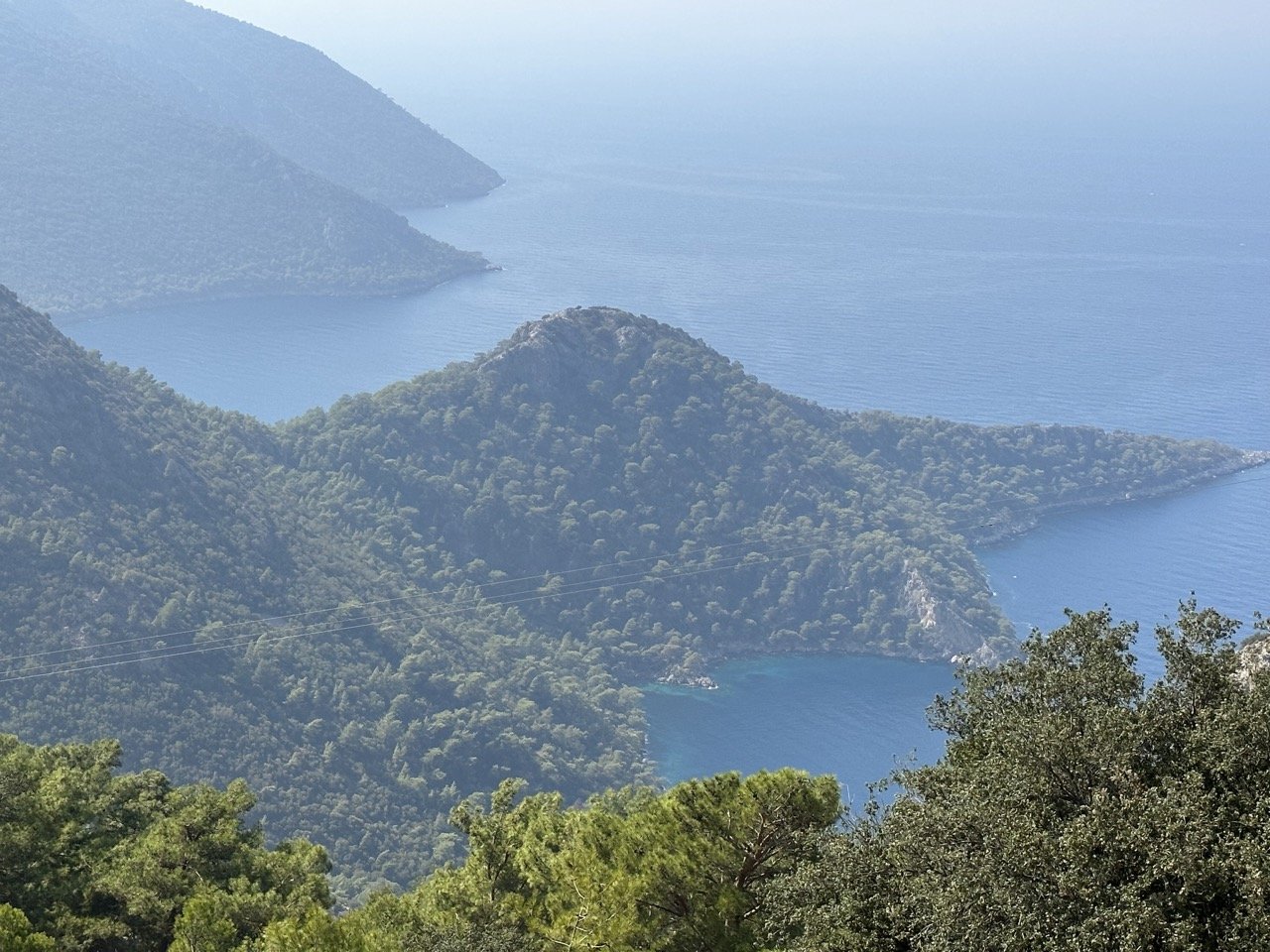
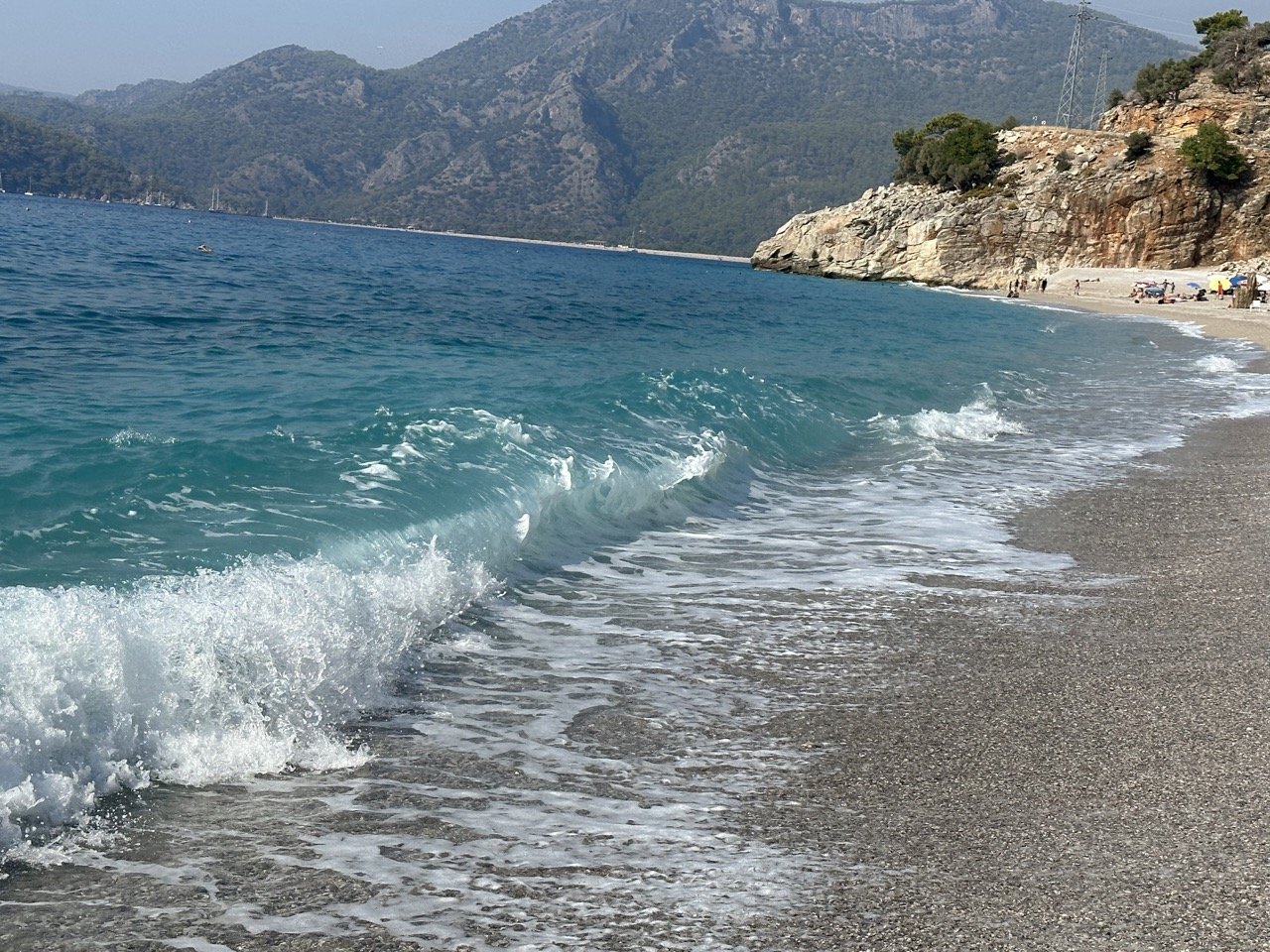
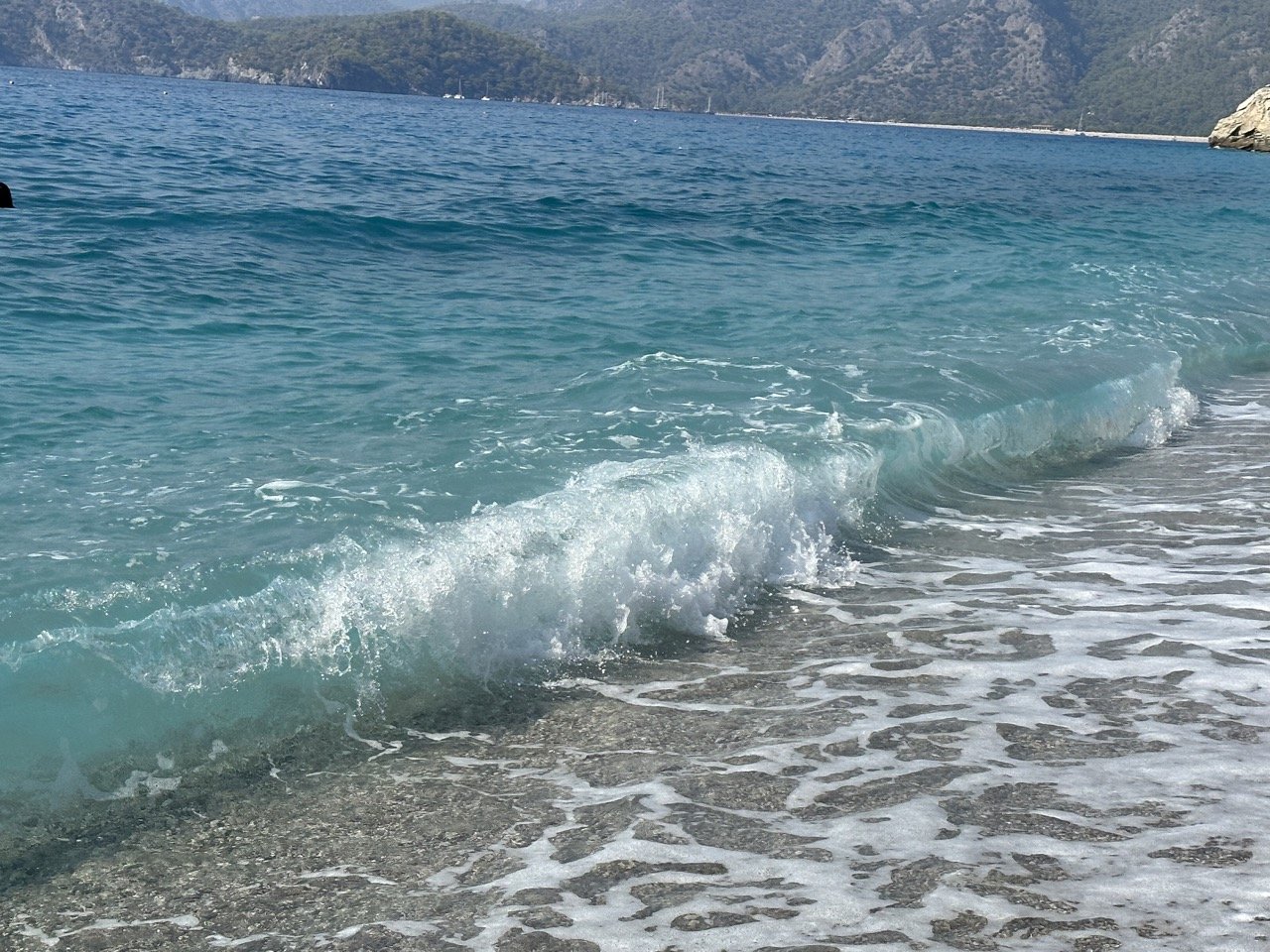


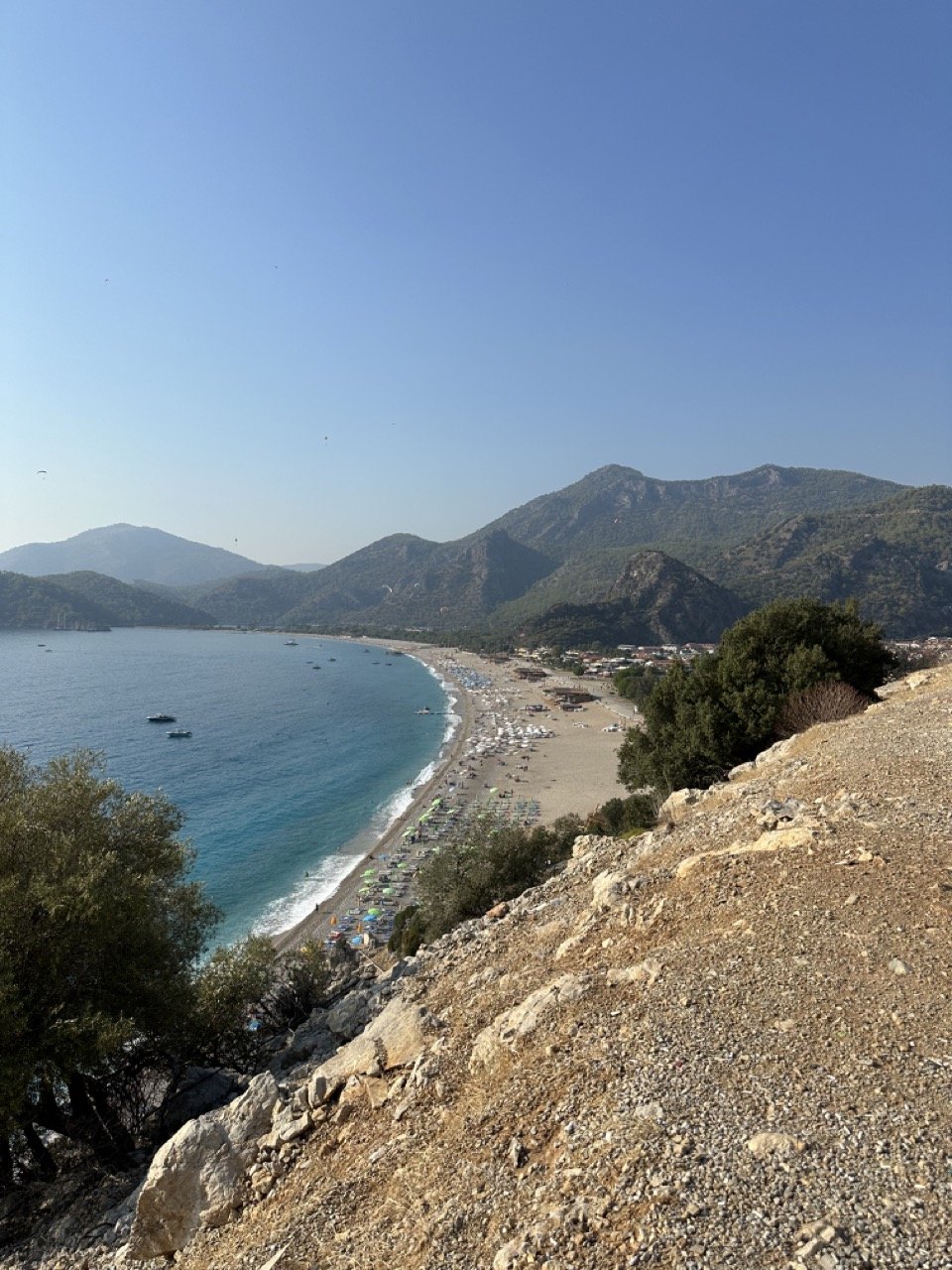
We continued on to Göcek where we checked into a small family run hotel/apartment comprised of handmade olive wood furniture, hand sewn curtains, the walls decorated with children’s art. Grandma, mom, dad and their son cooked and served our “simple” breakfast each morning. Naturally, I felt instantly at home! The neighborhood was covered with olive trees, along every sidewalk, in every yard and smack dab in the middle of the road.
Middle of the road olive tree.
Göcek is the southern edge of the mainland where the Aegean Sea begins. The Aegean is considered to be a bay within the eastern Mediterranean basin. The landscape is a bit different in the Aegean region. Unlike the Mediterranean region where the Taurus Mountains parallel the sea, the Aegean mountains often cut straight into the ocean. These perpendicular mountains create a coastline full of bays and coves which are less exposed than the Mediterranean coast. The Med is known for its beaches while the Aegean is known for its cruising grounds! The fertile hills and valleys of the Aegean trap the warm moist ocean air and create a natural greenhouse. This is the preferred climate for olive trees and vast expanses of olive groves cover the steep landscape.
There is a huge, very calm bay in Göcek with 6 or 7 different marinas. It is a high-class sailing area with charter boats, larger vessels, and many sailing companies. It is a super popular place for summer visitors and draws many extremely wealthy cruisers who hire a captain to manage their vessel, anchor in a small cove and fly back and forth to their European homes all summer.
The town itself is relatively small and because there is very little nightlife it is also very quiet. There are lots of expensive shops along the waterfront and there are dozens of fabulous restaurants - many of which were well out of our price range. We explored the region outside of town and drove yet another winding dirt road above the bay to get a broader view of the area. In the evening we met with the two brothers who run the company that is commissioning some of the extras we are adding to our boat (our dinghy, Wi-Fi and cell boosters, water filter, etc). They hosted us for dinner and we swapped stories of our travels.


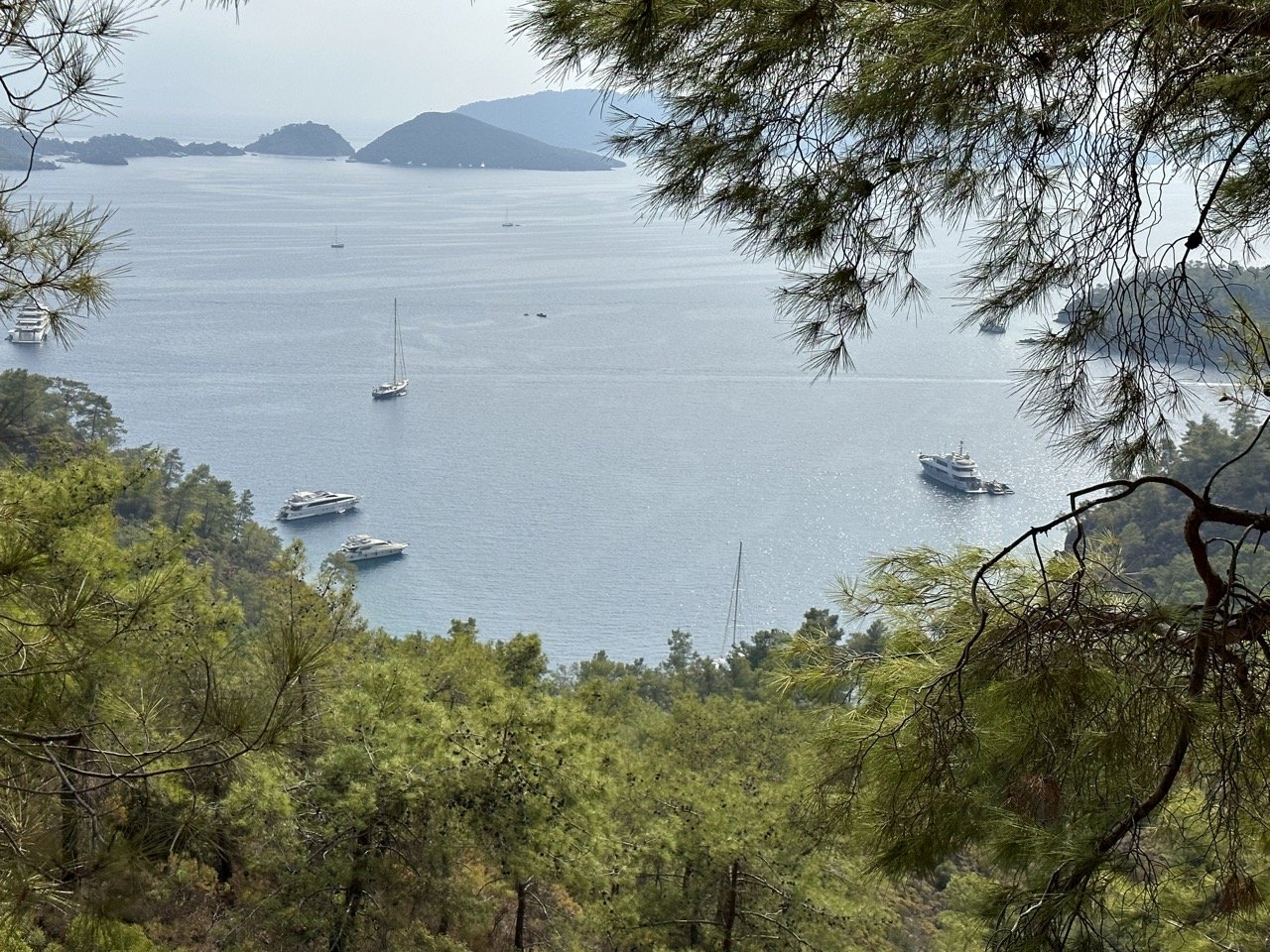
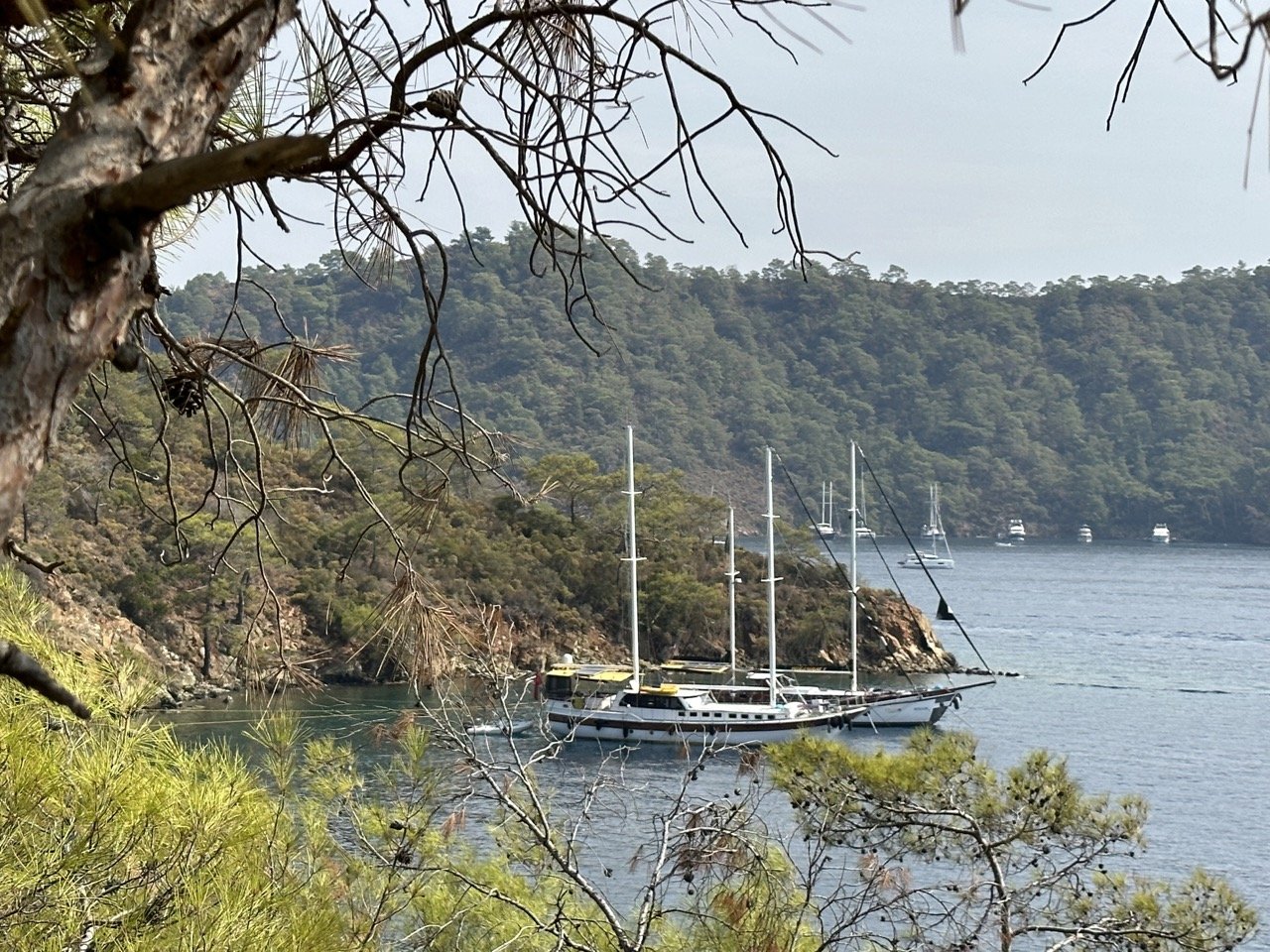
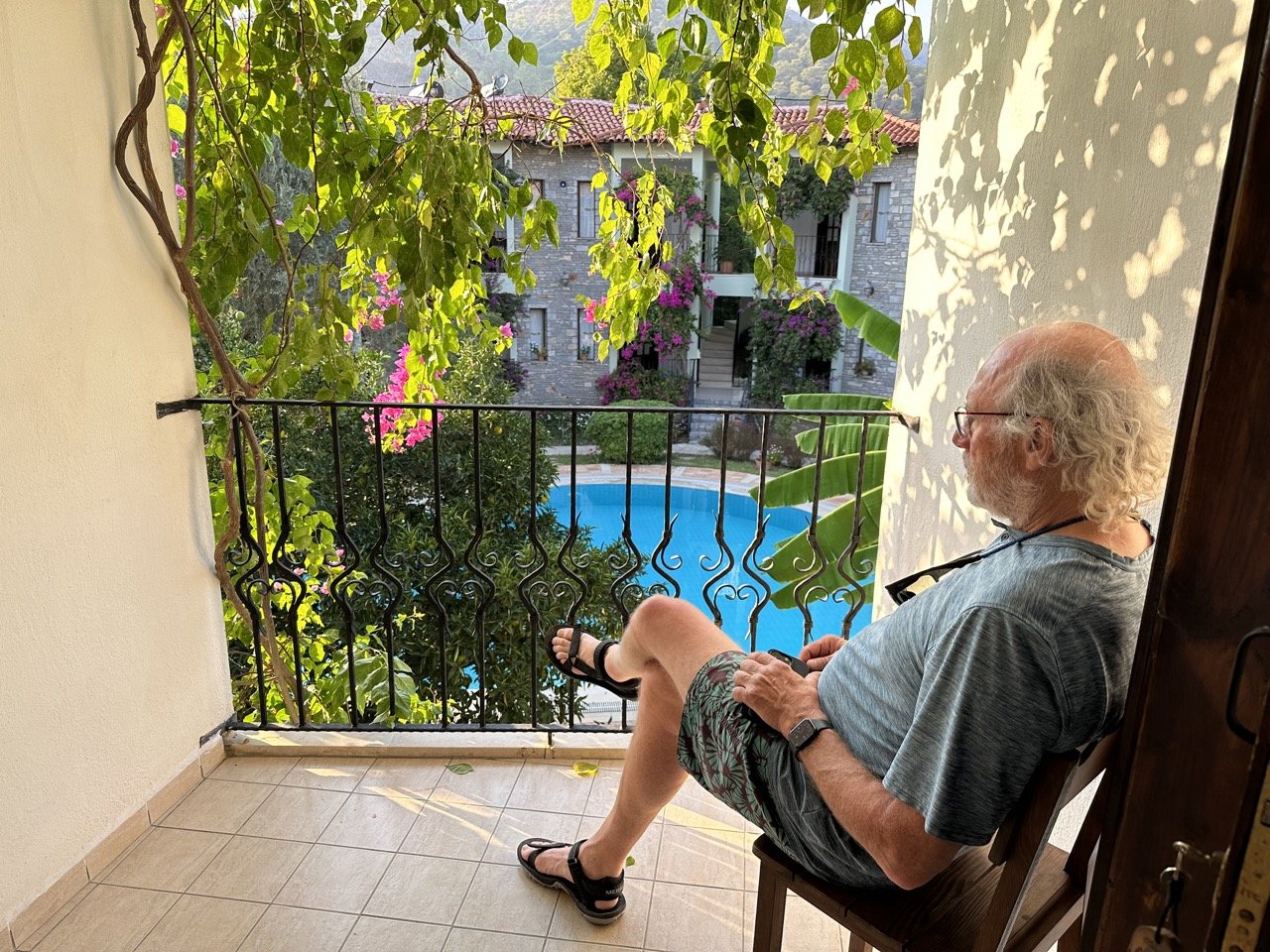
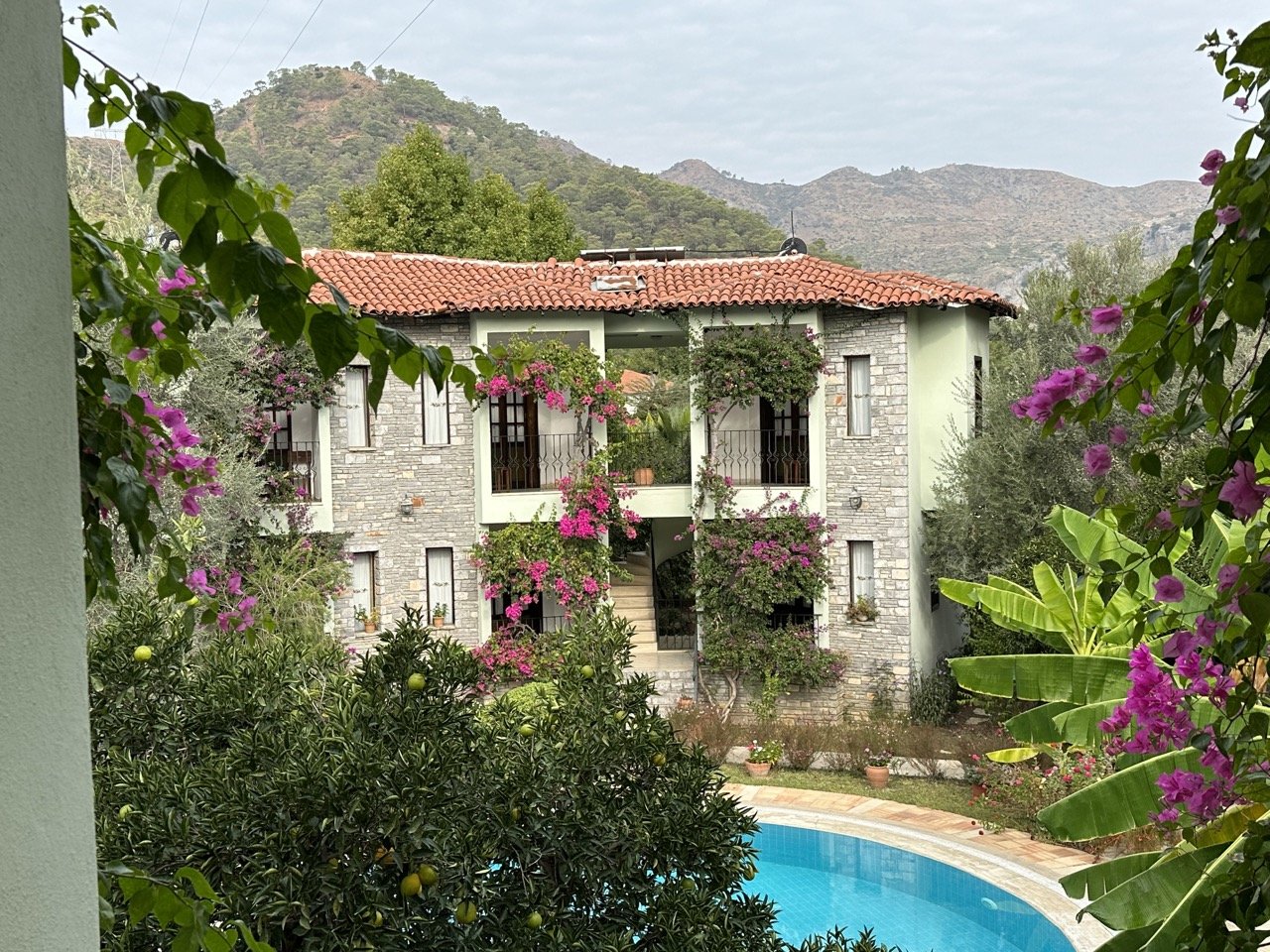
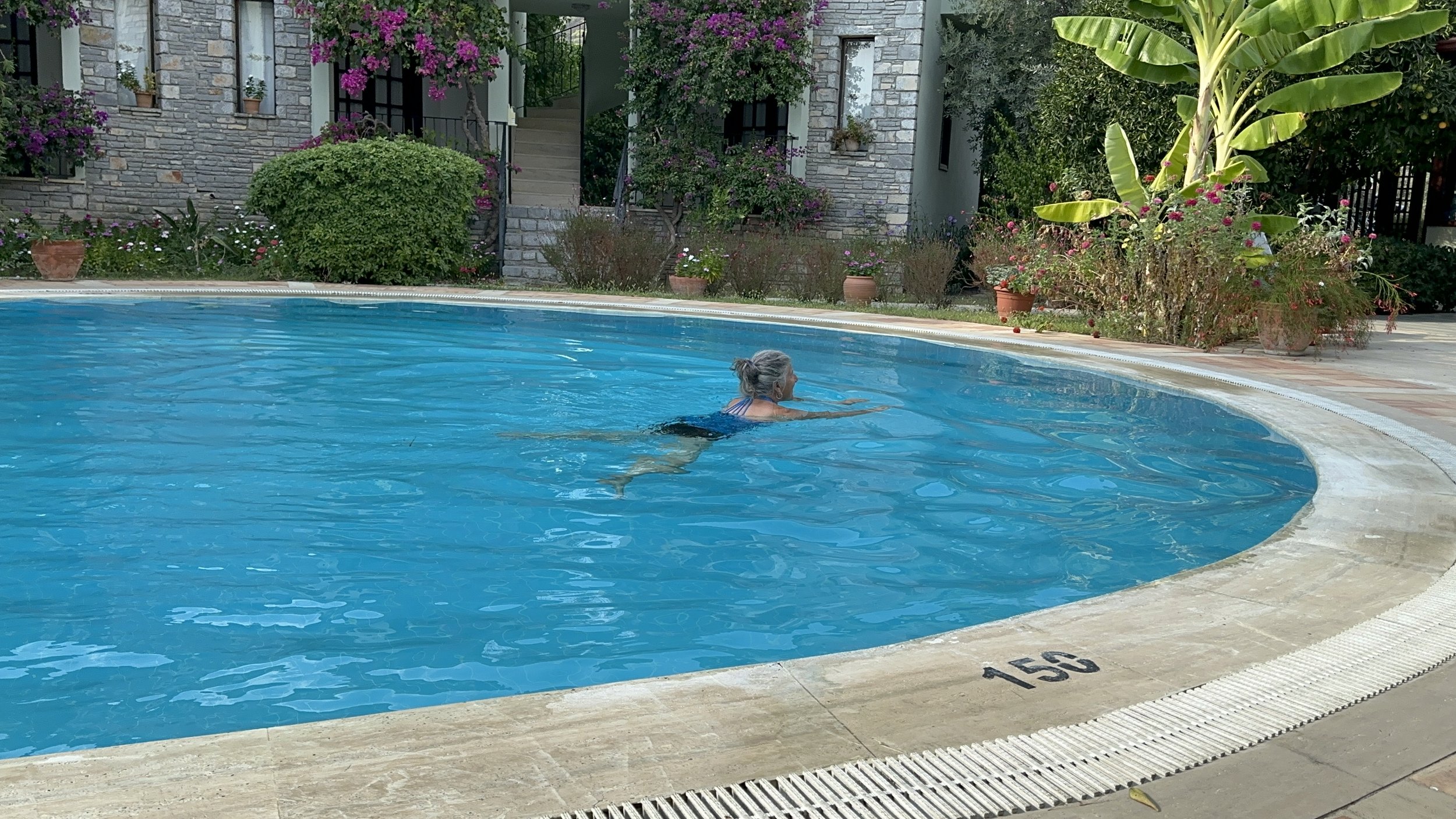
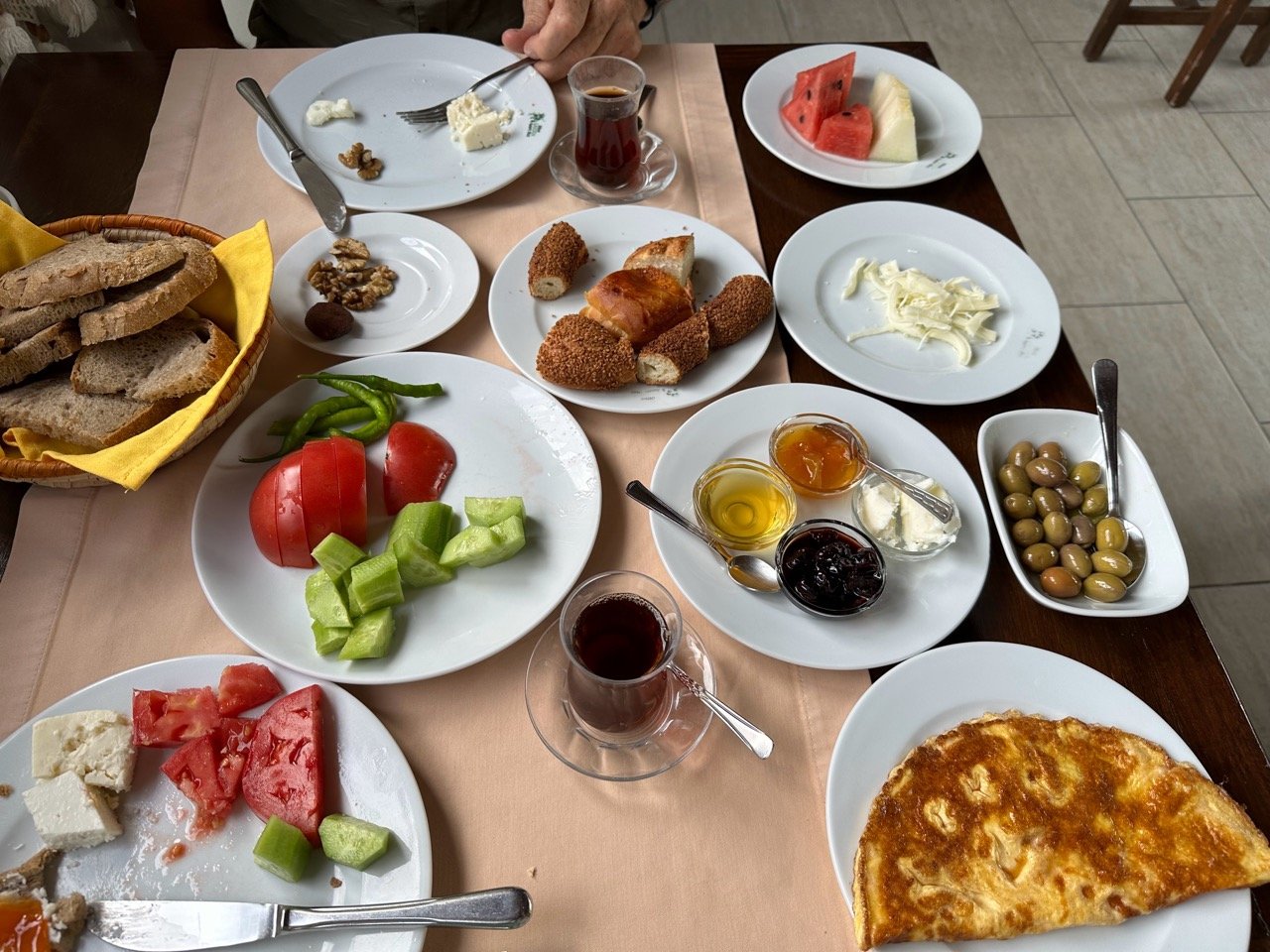

After a couple of days we continued on toward Marmaris, a busy tourist destination and a popular wintering location for hundreds of cruising boaters. The city's population is about 31,000 but swells to around 300-400,000 during the tourist season.
We awoke, the morning we were to depart, to cool rainy weather and I worried that my days of swimming in the ocean were coming to an end. It rained most of the drive so we went straight to Marmaris to find our apartment. We had entered the address into Google maps however upon arriving in the old part of town Google kept directing us down one way streets the wrong way, to turn where there was only a walking path, and even to turn where there were no streets at all. We must have circled around the area in the rain for well over half an hour before we decided to get out of that part of town and just find a parking lot. I then messaged our host and he met us at a cafe we had passed several times in our wanderings. It turned out that the only way to access the apartment we’d rented was on foot along the the harbor promenade beneath the castle ruins and then up the marble stairs into an old, yet newly renovated building. (There are rarely elevators in any of the older buildings where we’ve stayed - I’d guess we average about 12 flights/day). Our host explained that the home once belonged to his grandmother and he and his wife had just finished the renovations earlier this year.
The apartment was nothing short of extraordinary. It was a high-ceilinged studio layout with a queen sized bed in one alcove, a spacious living room, dining area and kitchenette on the other end. The bathroom (walls, floor, shower, etc.) was entirely made of gorgeous grey marble. The south facing view was solid windows following the harbor from east to west. But the most phenomenal thing about the place was the rooftop terrace overlooking the clay tiled roofs and chimneys and the harbor. It was a wraparound terrace with several teak seating areas, eating table and loungers. We captured just a hint of the view through the downpour before striking out to retrieve our luggage.
Let me tell you, trying to again find our car (where the hell did we park it?) and then walking through the busy cobblestoned streets of Marmaris, with a backpack and a large duffle, in the pouring rain no less, is not my idea of fun. But we miraculously settled into the flat before the real storm began. Lightening and thunder surrounded us up on the rooftop as the rain pelted the windows. The sun set and the sky darkened. We turned off all the lights and cozied up on the couch enthralled by the magnitude of the storm. For those of you who don’t know this about me - I have always been in complete awe of electrical storms! (I should have become a storm chaser!)
Time passed slowly and when we finally shook ourselves out of our storm-trance we arose from the couch into a pool of cold water. The horizontal rain pummeling the windows had found its way inside and was running down the walls. The living area and bedroom alcove were both flooded. We mopped up what we could with the towels on hand, and I messaged our host. He and his wife arrived with mops and buckets, more towels and prolonged apologies - explaining that this was the first rain of the season and offering us an additional nights stay free of charge.
The next morning dawned warm and bright and we spent the next few days exploring the castle, strolling the wide harbor promenade, eating ice cream on our rooftop and getting lost on the narrow, winding, stone streets of old Marmaris.


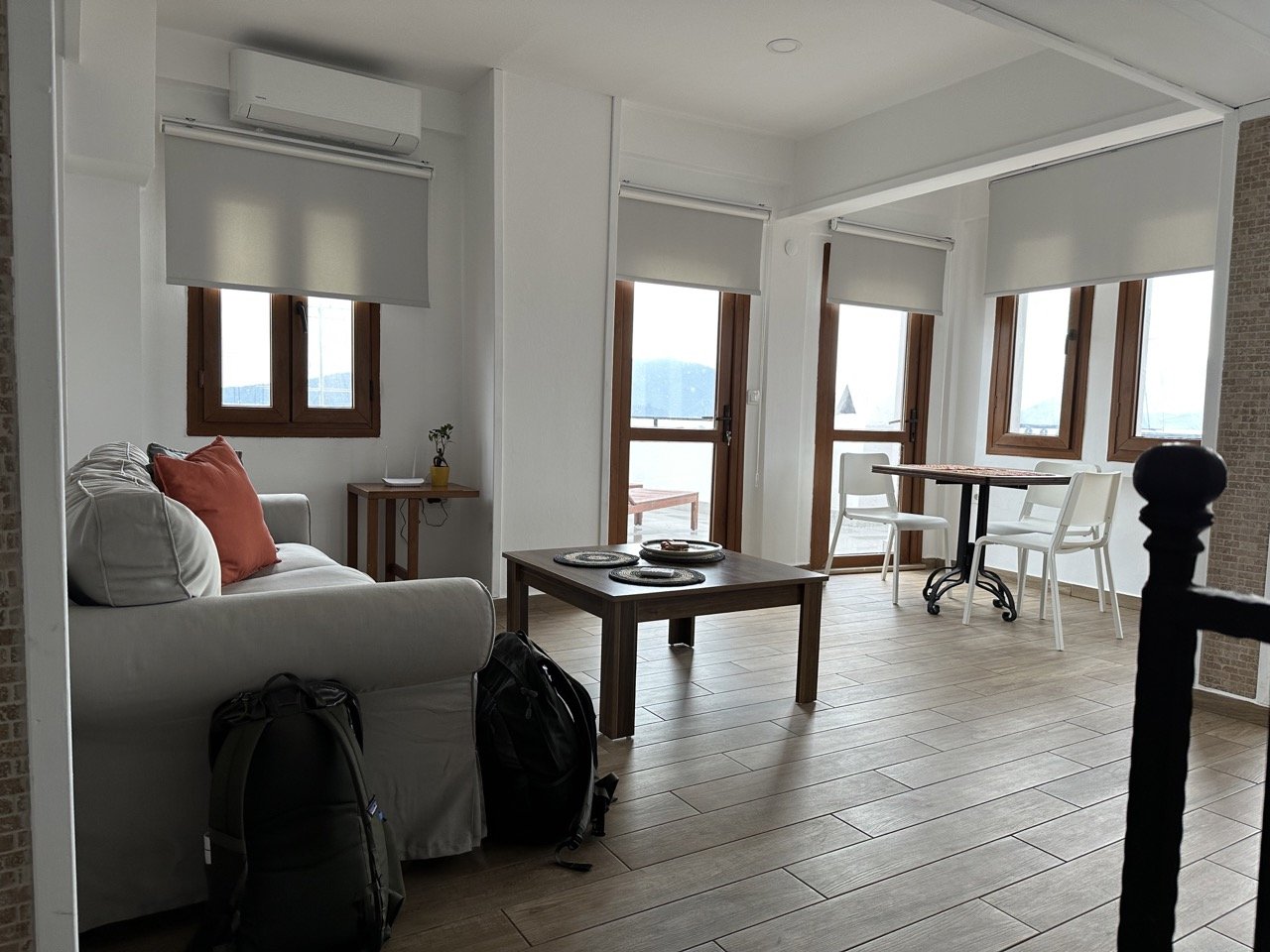
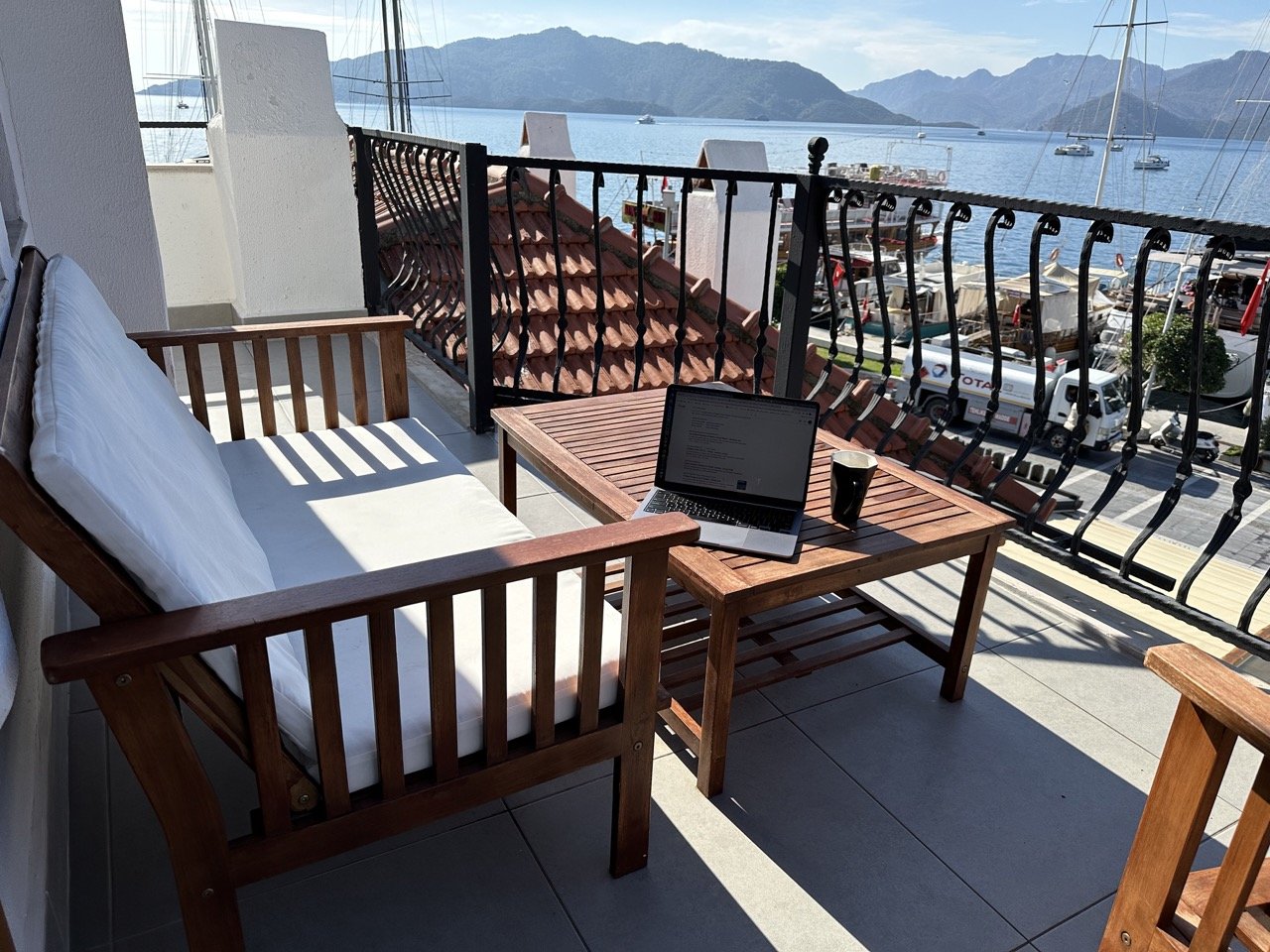
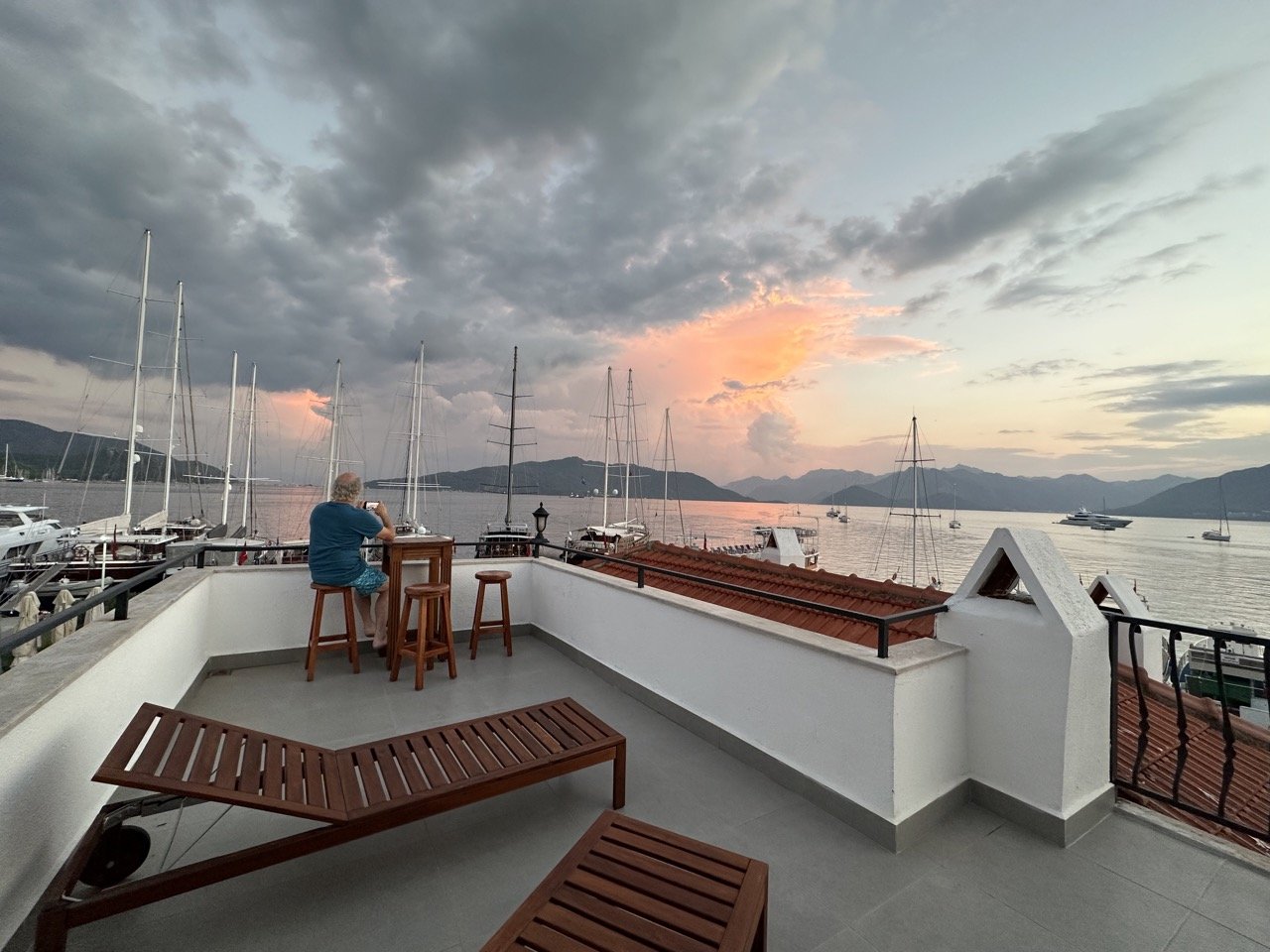

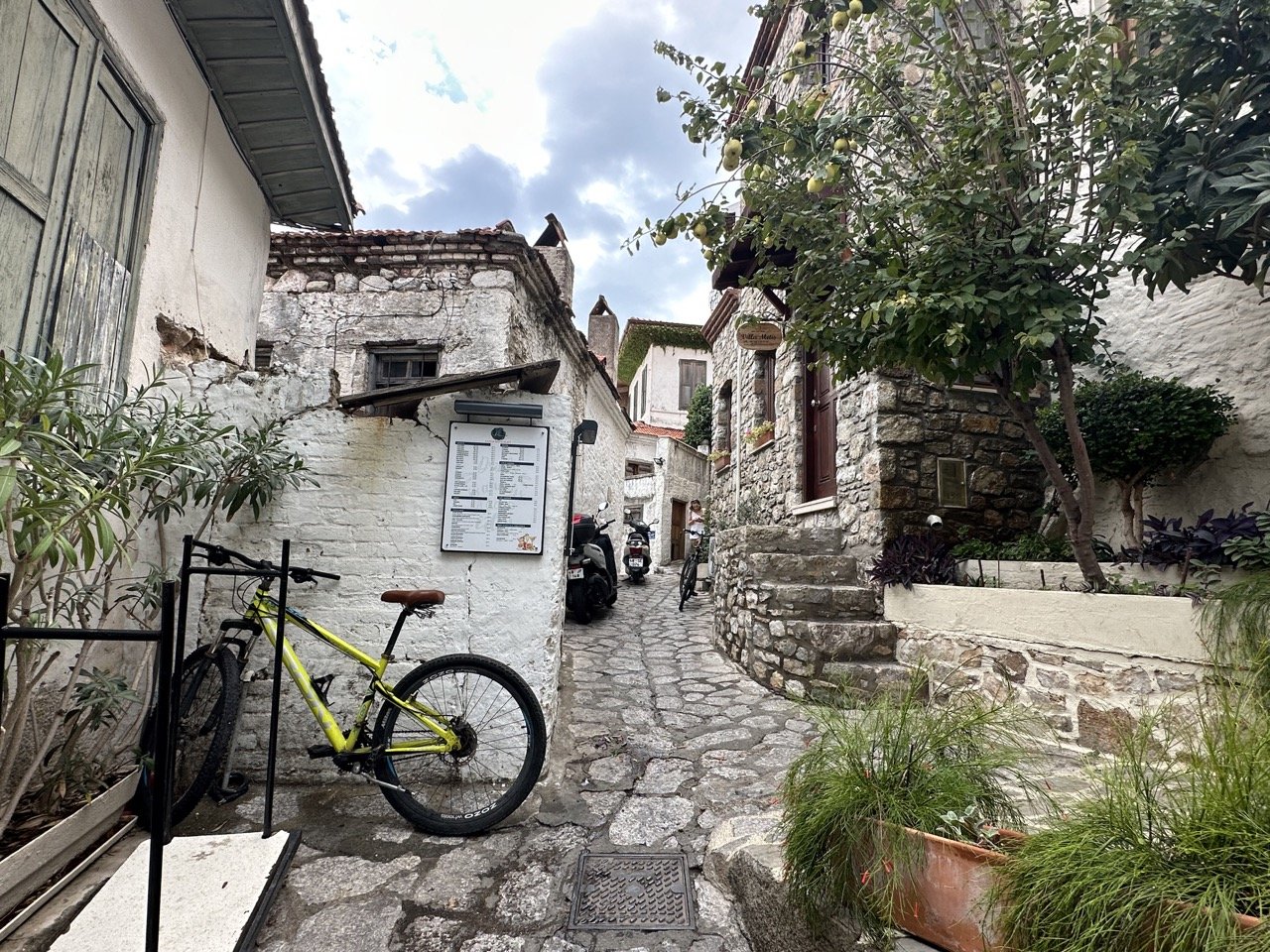


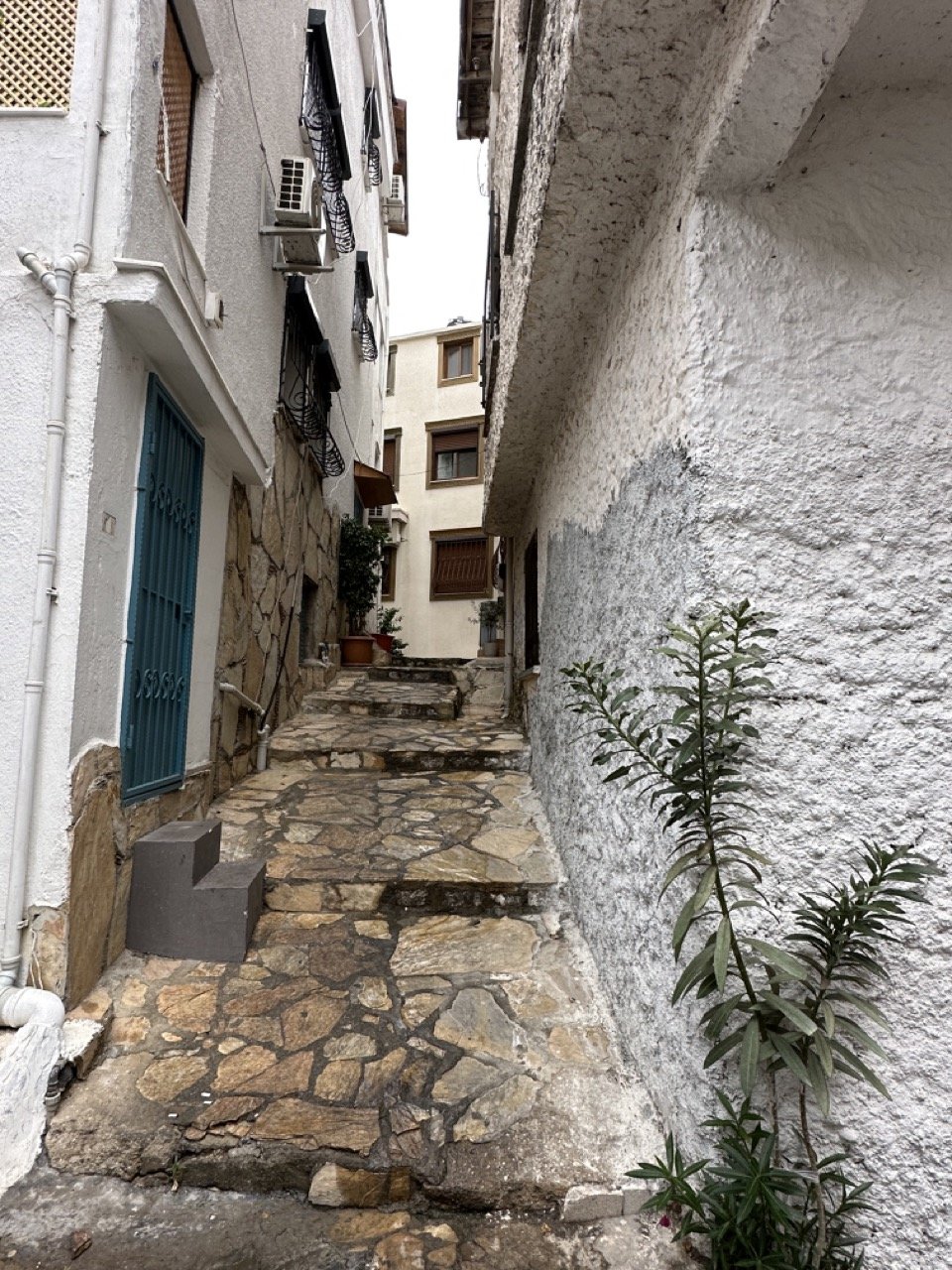

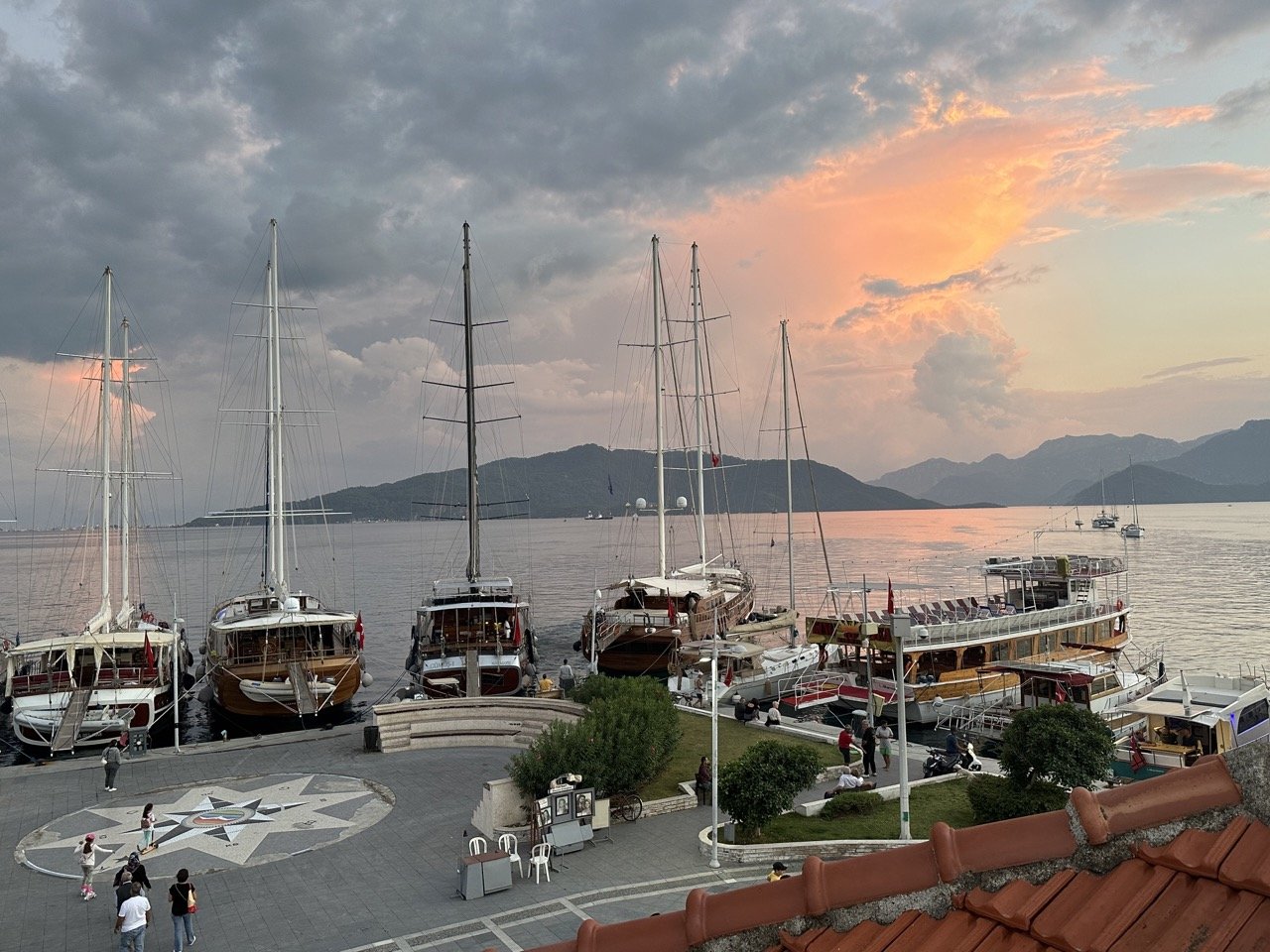


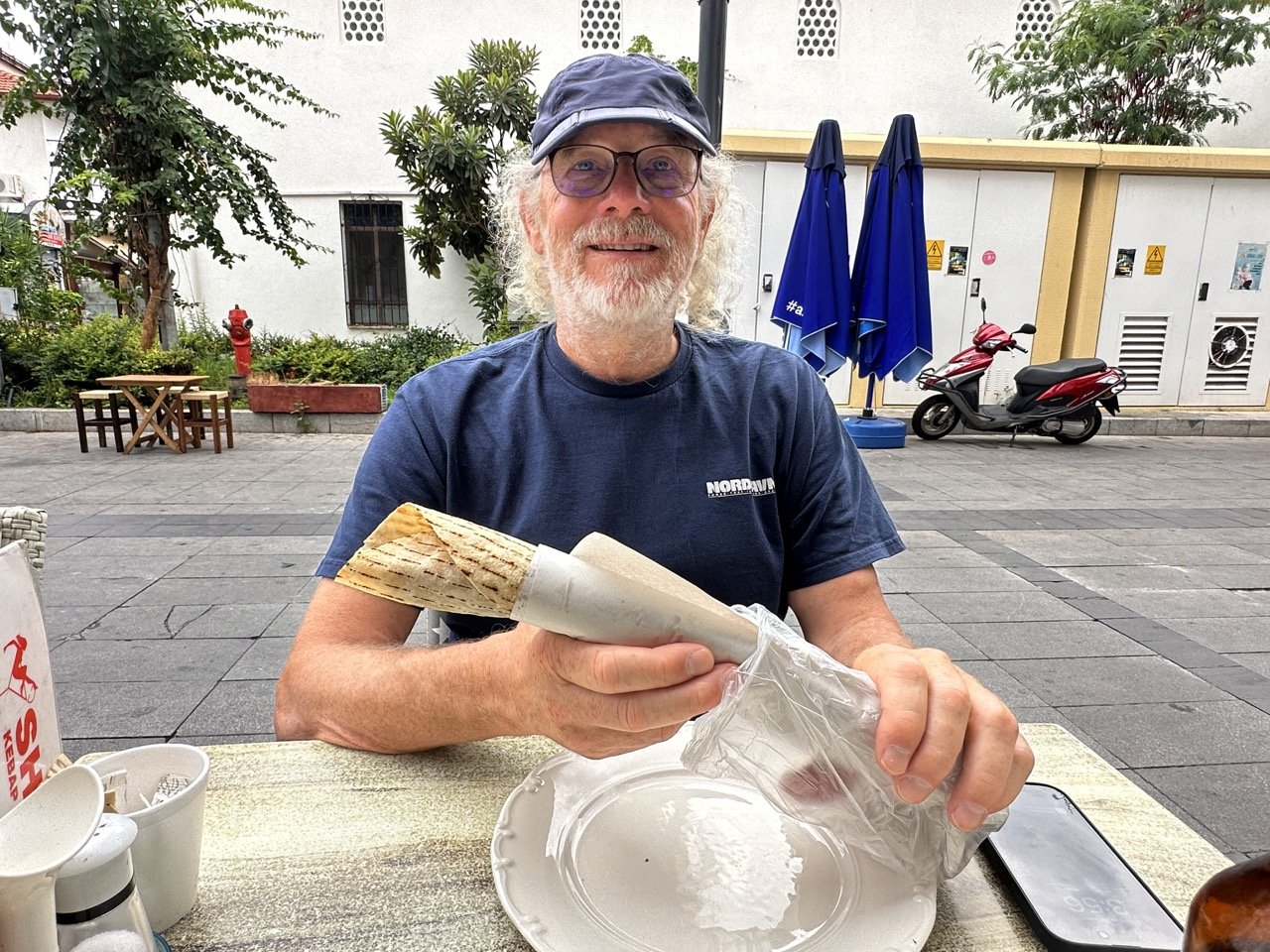
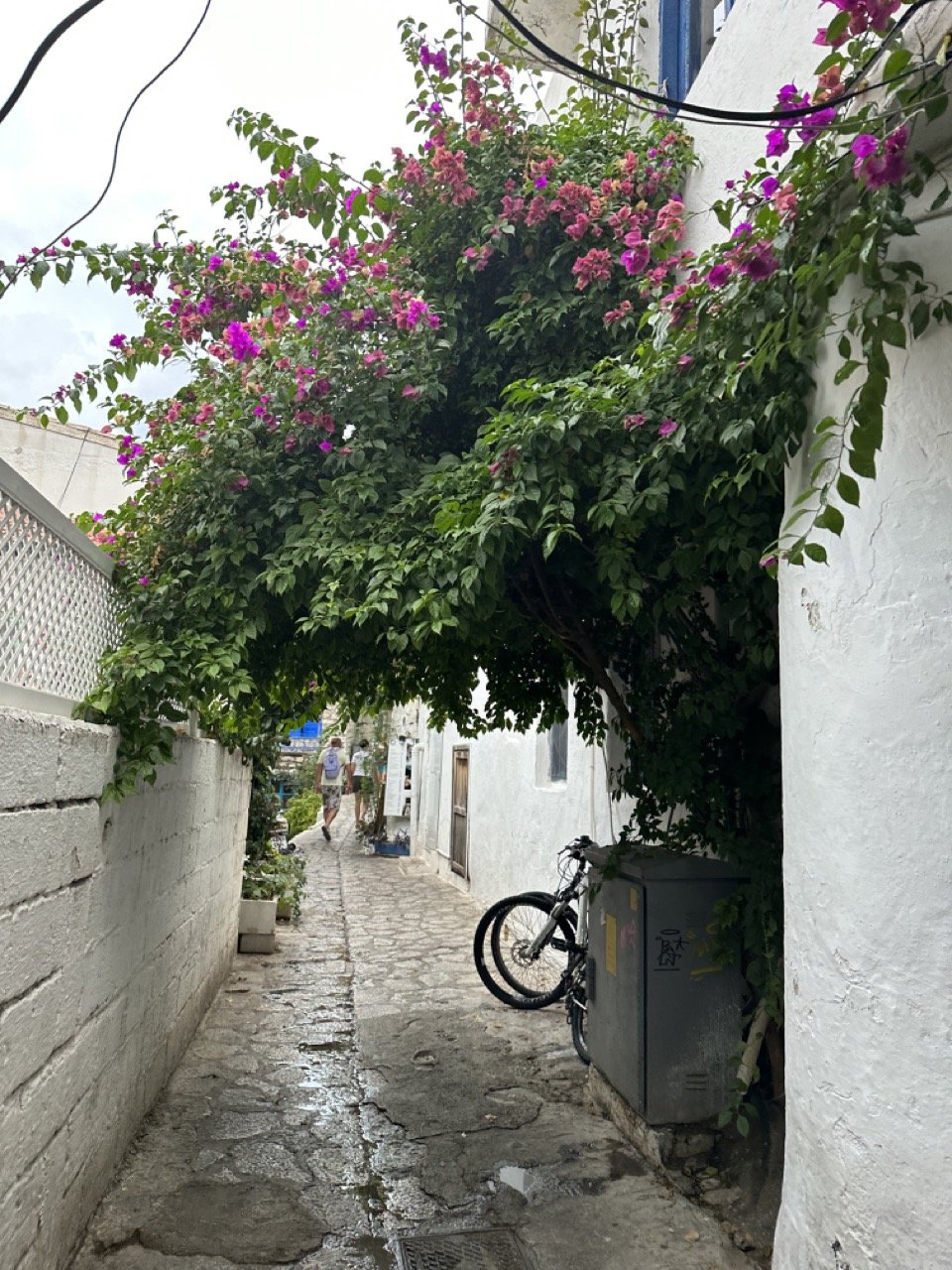
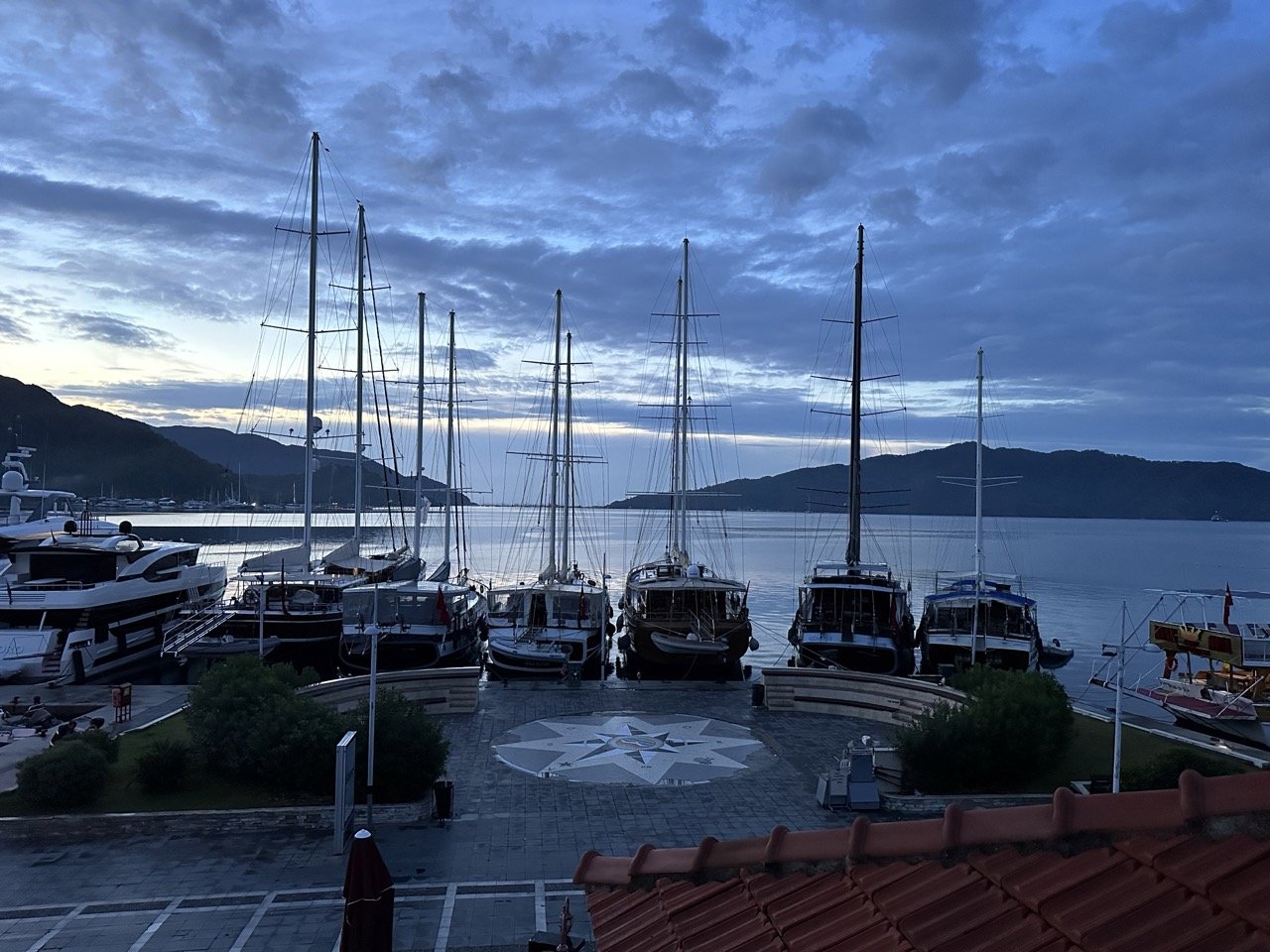
Our next stop was Kuşadası. We actually set an alarm that day because we planned to take the morning crossing of the twice daily ferry from Datça to Bodrum and we were over an hour away from the terminal. The vessel is a small car ferry holding maybe a dozen vehicles at best. There were just four cars on our crossing and maybe two dozen people. We delighted in being at sea at last - we had not yet been on the water since arriving in Turkey. The ferry arrived into Bodrum all too soon and I was surprised to see no ferry dock in the harbor, but rather a narrow slip wedged in amongst all the other boats.
The drive took us through vast agricultural land planted with corn and then cotton fields as far as you could see. We learned that many producers have moved from growing corn to planting cotton instead. The average cotton yield in Turkey is above the world average, placing it close to first place among the major producing countries. Additionally, Turkey is one of the main countries engaged in organic cotton production, it’s cotton as a brand is registered as “GMO Free Turkish Cotton”. This provides a privileged position to the country as the only country in the world producing GMO-free cotton.
Kuşadası is a large, modern, European looking city. The steep hilly landscape is covered with holiday flats and big hotels. There is a cruise ship port next to the marina where tens of thousands of passengers arrive and depart all day and all night.
Sidewalk boar
We stayed on the hillside in one of the hundreds of holiday apartments and watched the cruise ships come and go. The first night we walked uphill from our flat to dinner. I’m not going to lie, the climb just about did me in. I think the grade of the street we were on was at least 60° - it felt like climbing a wall! After that we refrained from exploring the city above us, and focused on the steep streets between us and the harbor. One night while climbing home after dinner, we were startled by a herd of 8-10 wild boars foraging in the city. Somewhat incongruous with the traffic zipping by!

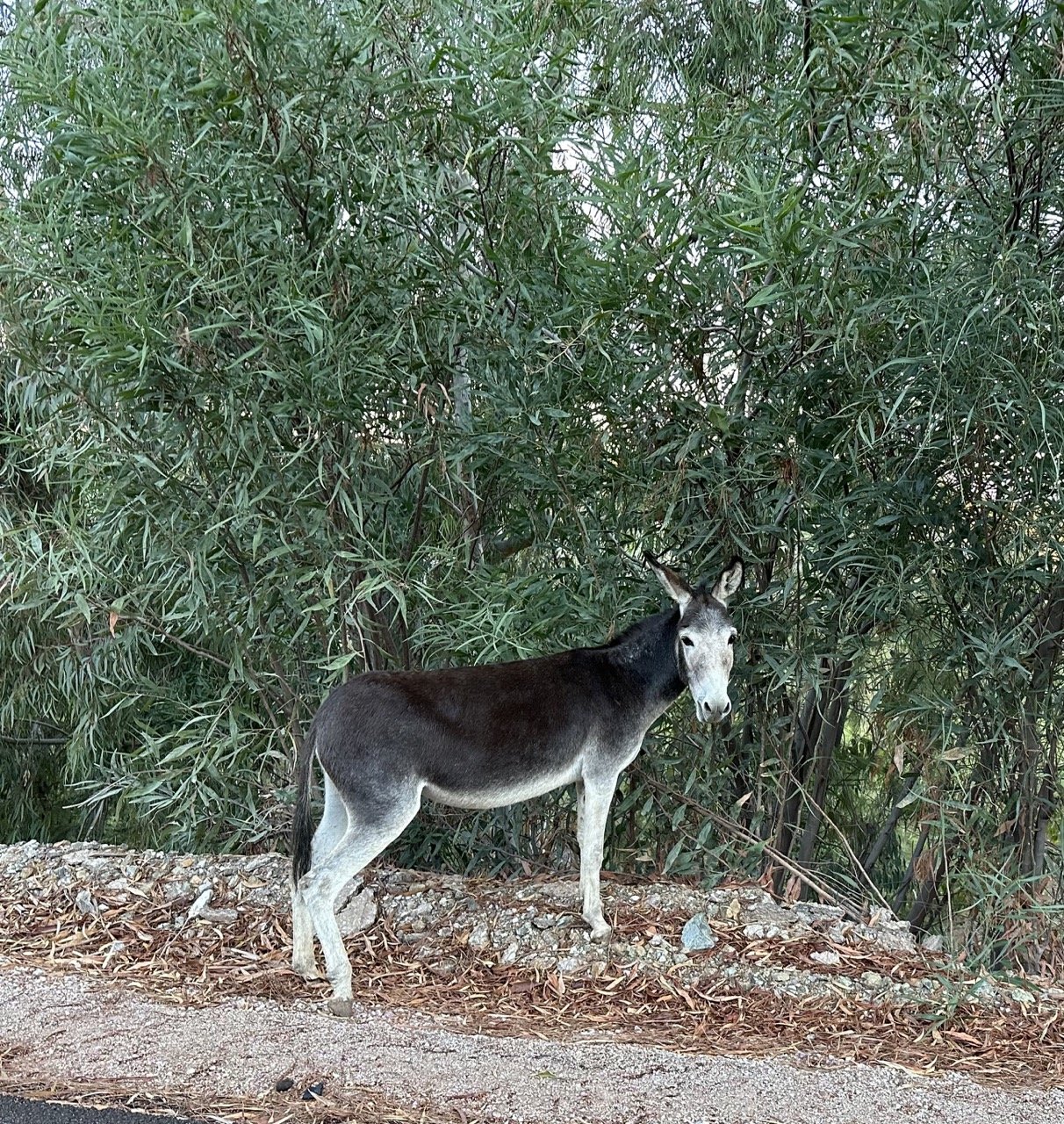
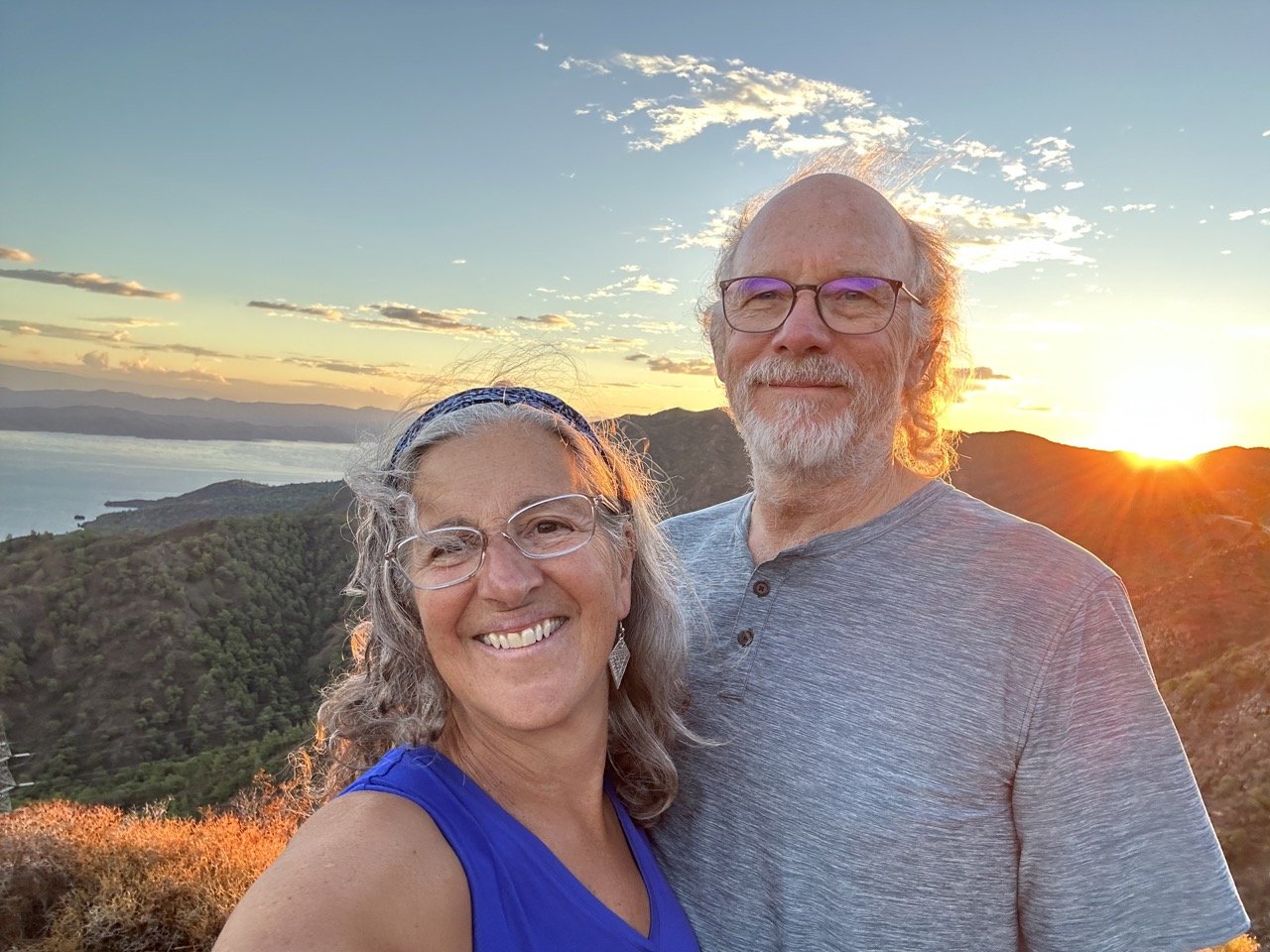

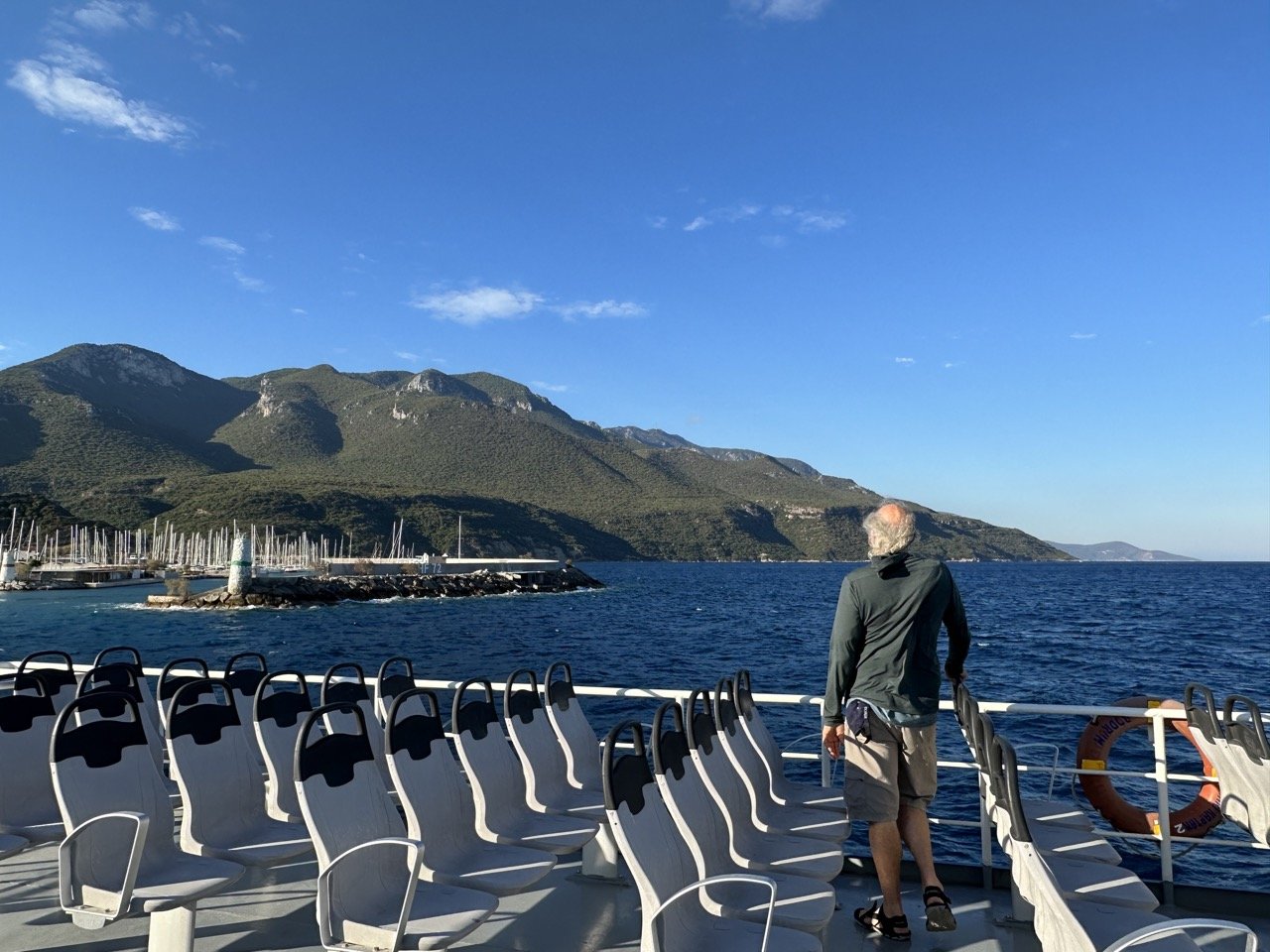
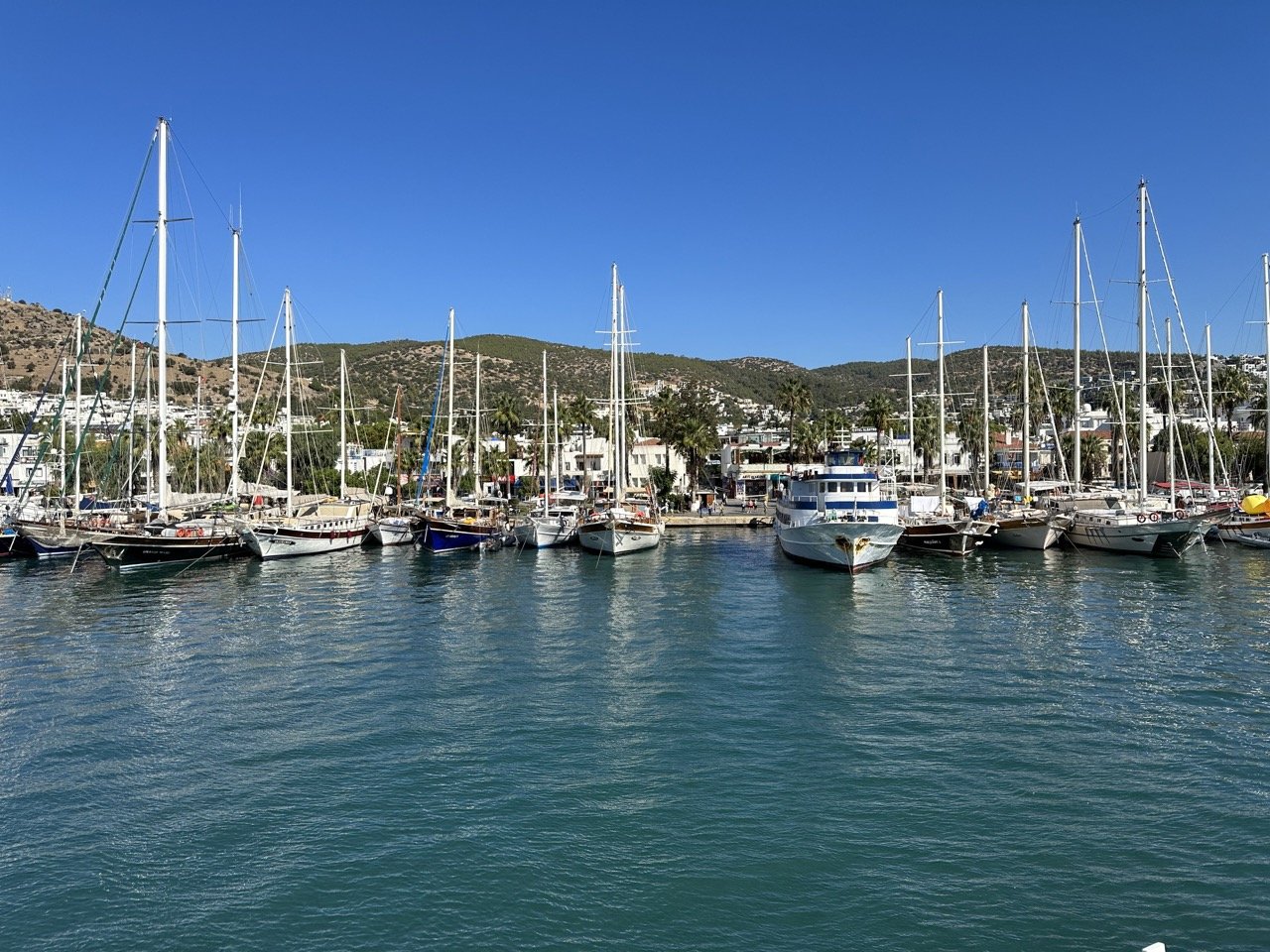
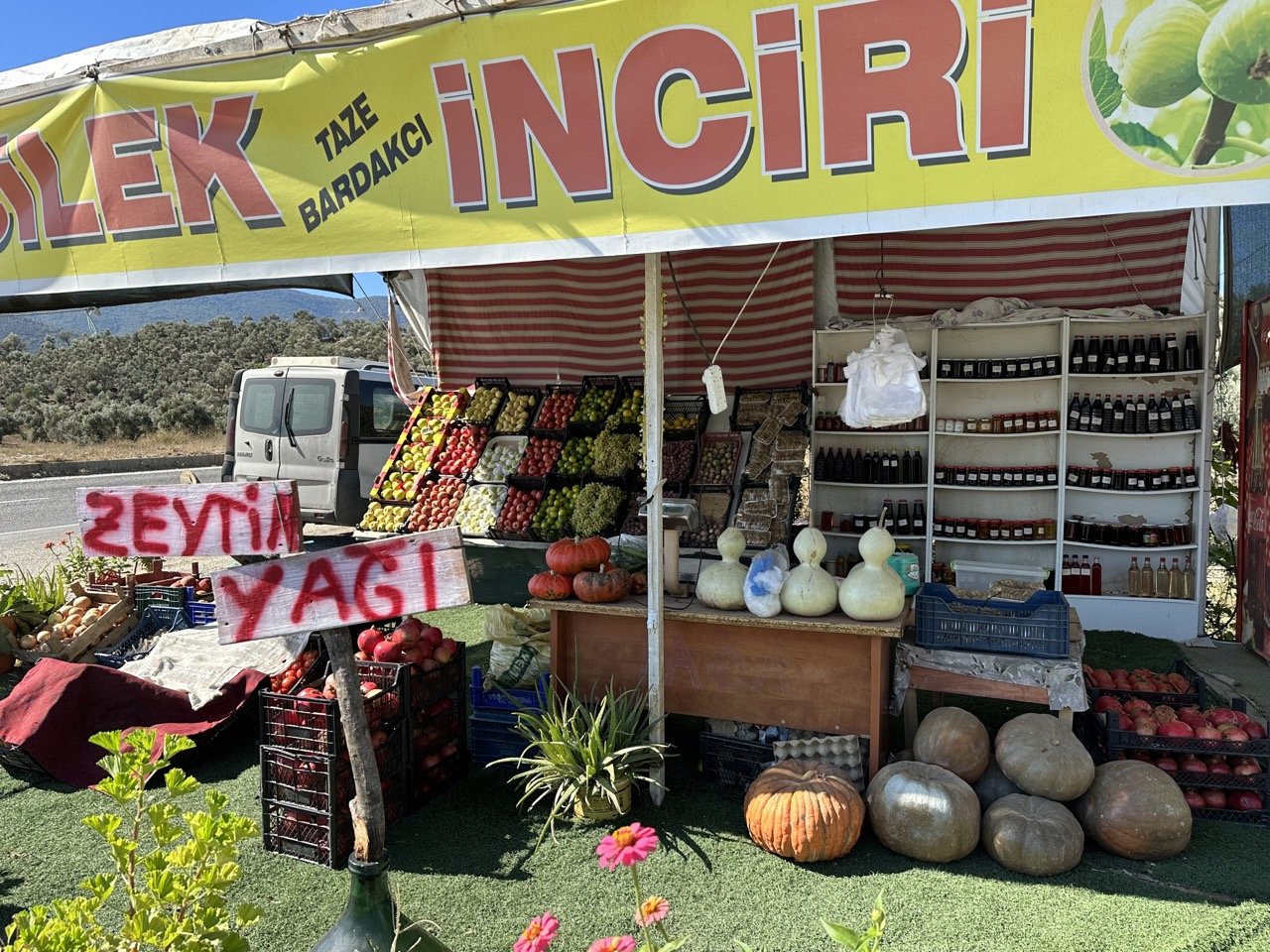
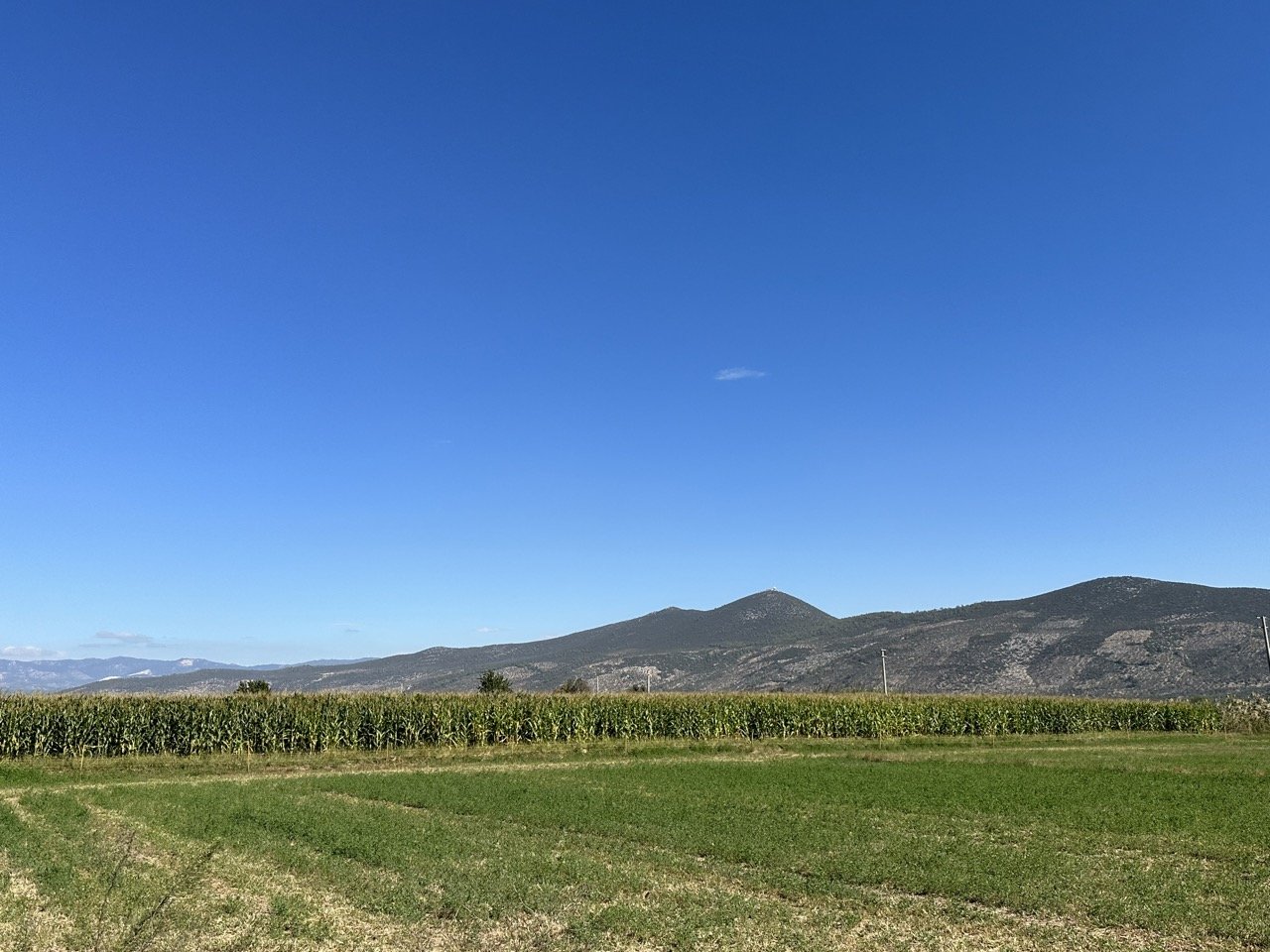

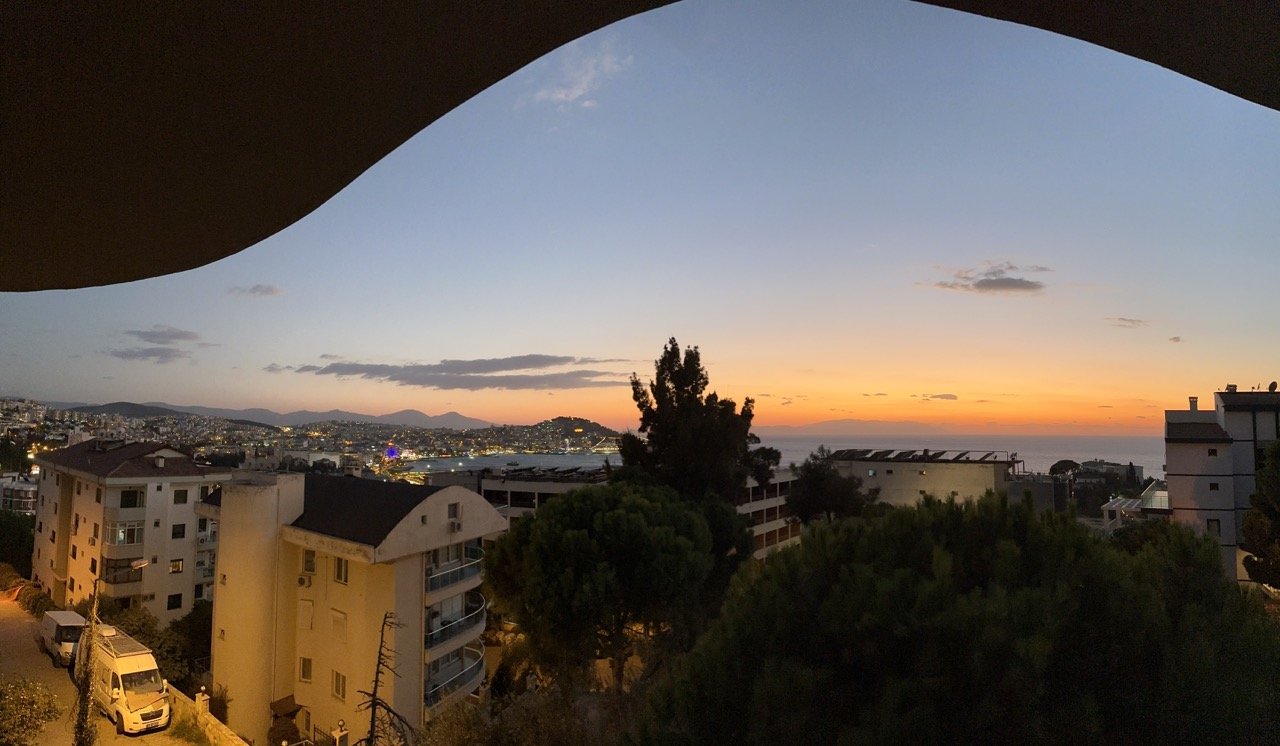
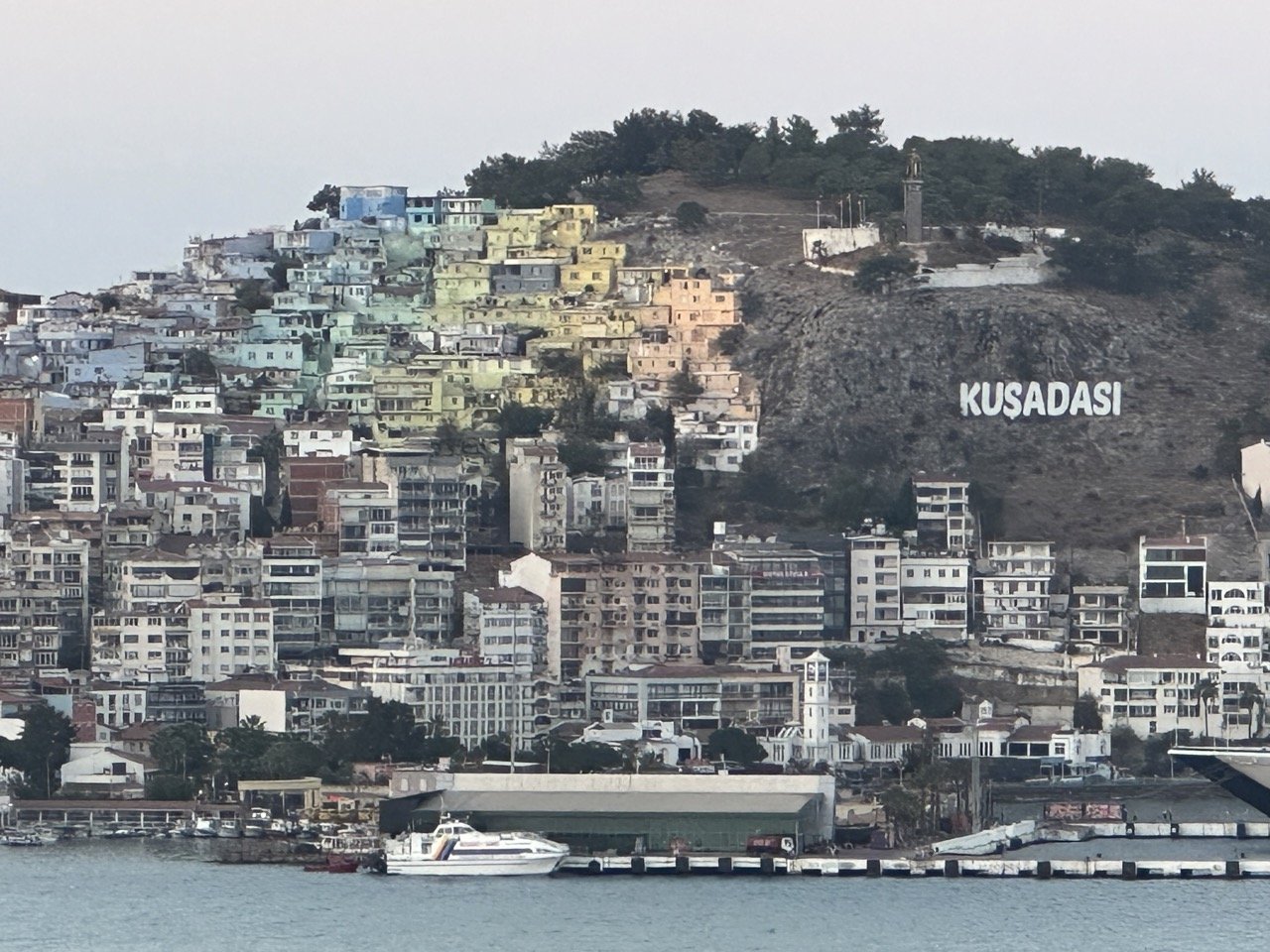
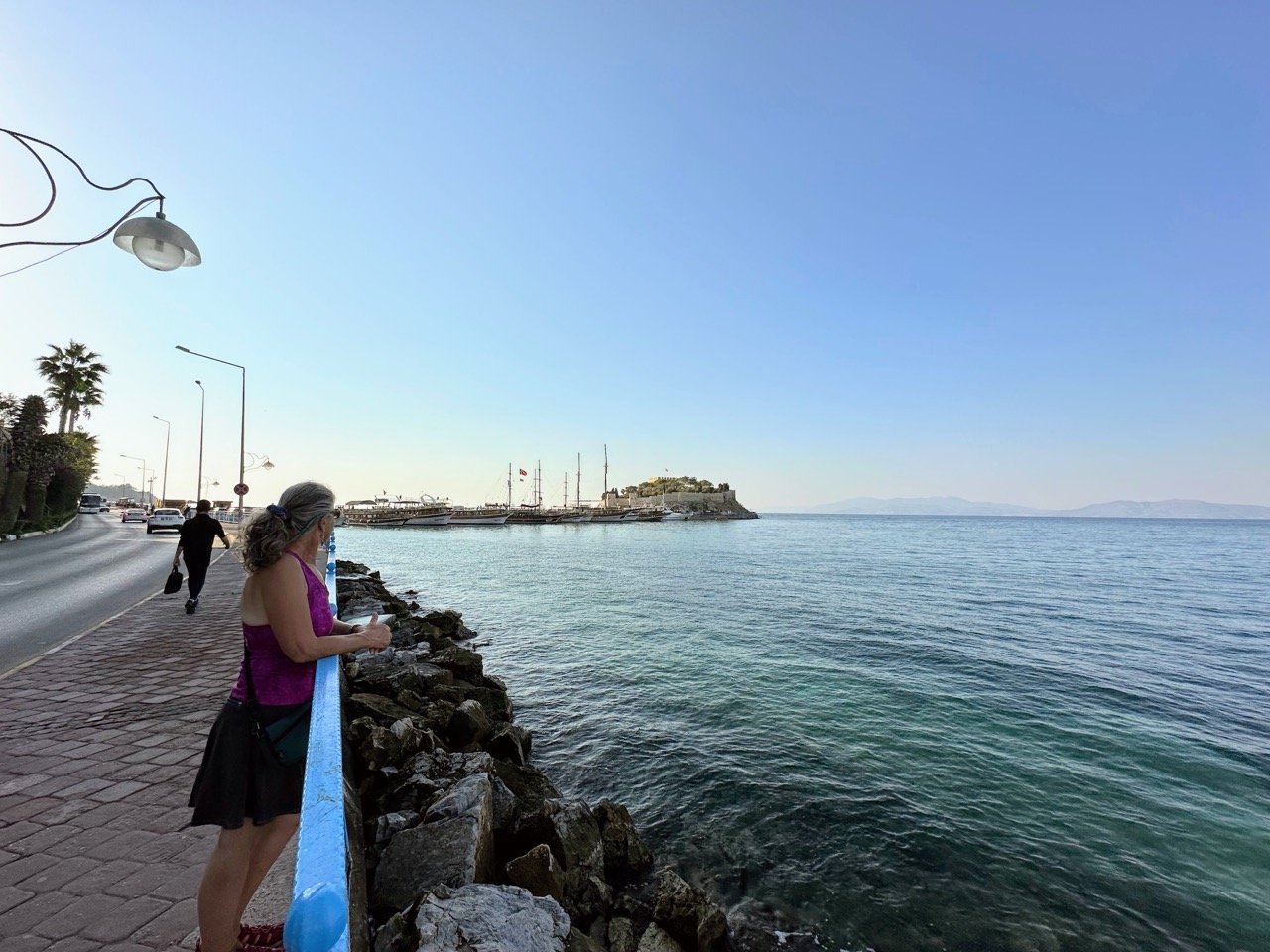

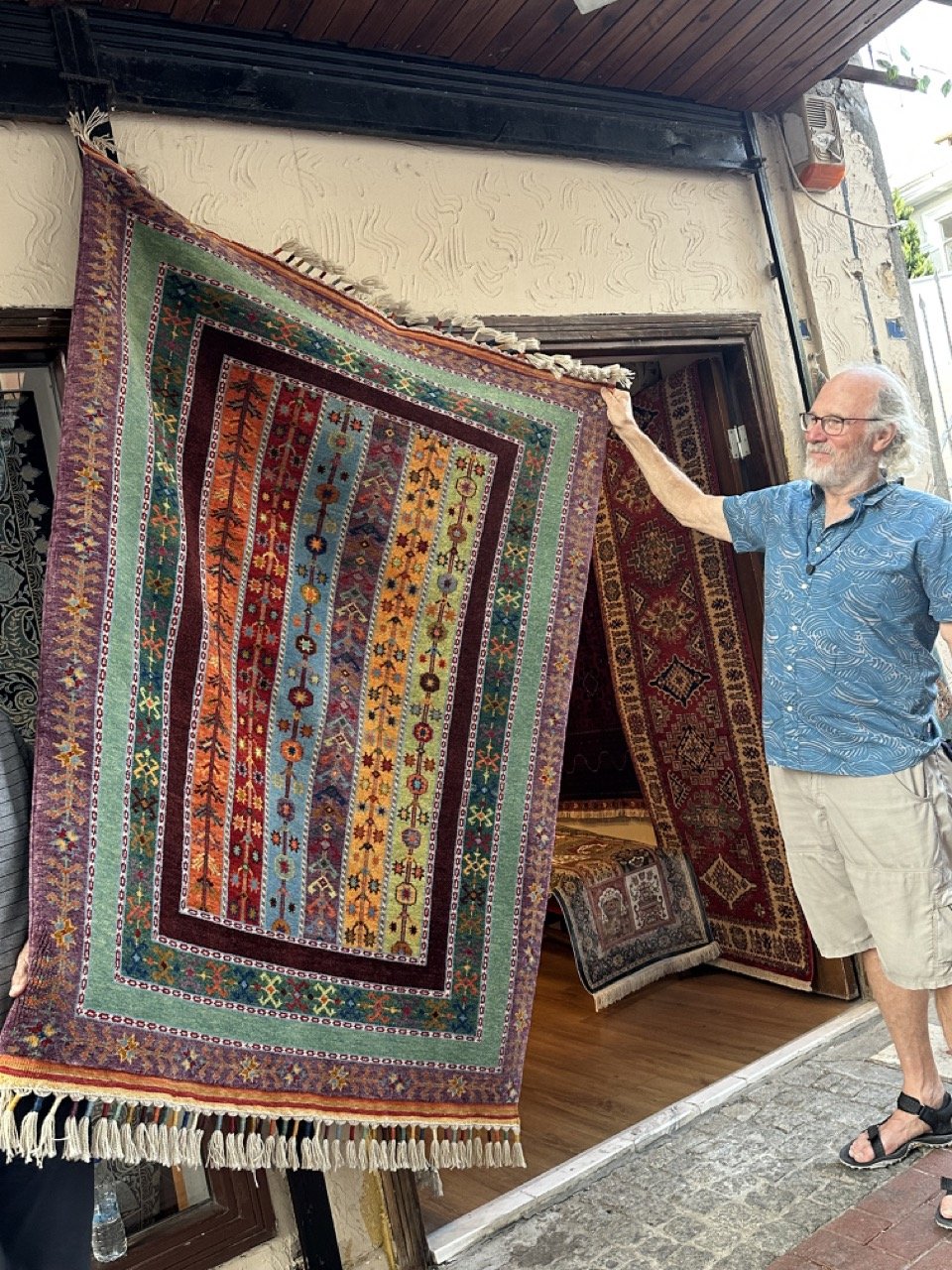
One of the main attractions in the area is to visit the ancient ruins of Ephesus, undoubtedly one of the greatest cities in history. There is no way to describe this place and impossible to estimate the tremendous number of hours that has gone into excavating and restoring the prominent landmarks of this ancient city. The work continues today and will likely continue for many decades. The magnificence of this place; from the marble roads, the Roman Terrace houses with their mosaic floors and walls, the Celsus Library which once held over 12,000 scrolls and was the third largest library in the ancient world, to the Grand Theater which had near-perfect acoustics and held 25,000 people. The sheer size of this ancient city and the profound energy that you experience will take your breath away! There are volumes that could be said about this powerful landmark - suffice it say, we will go back.
